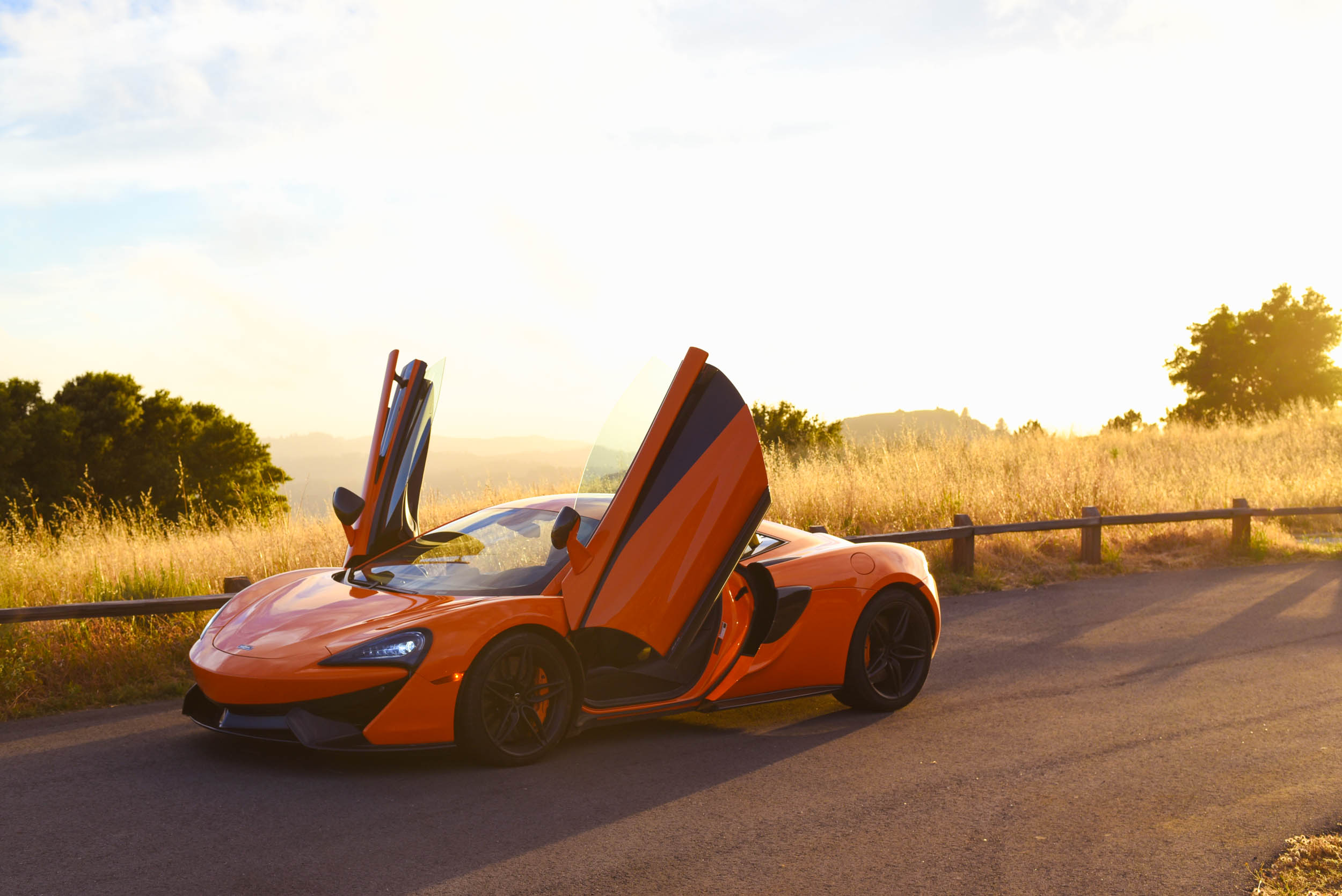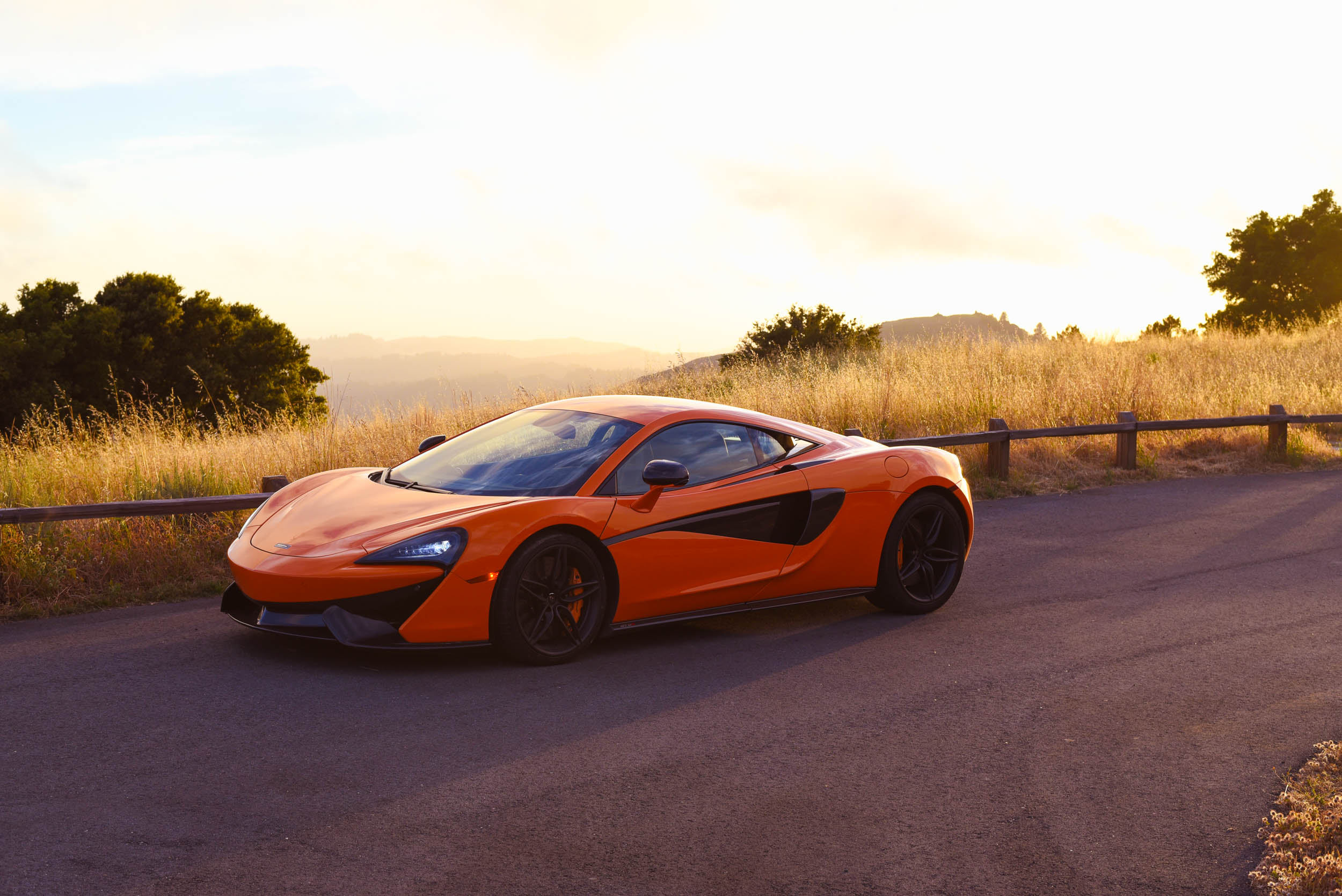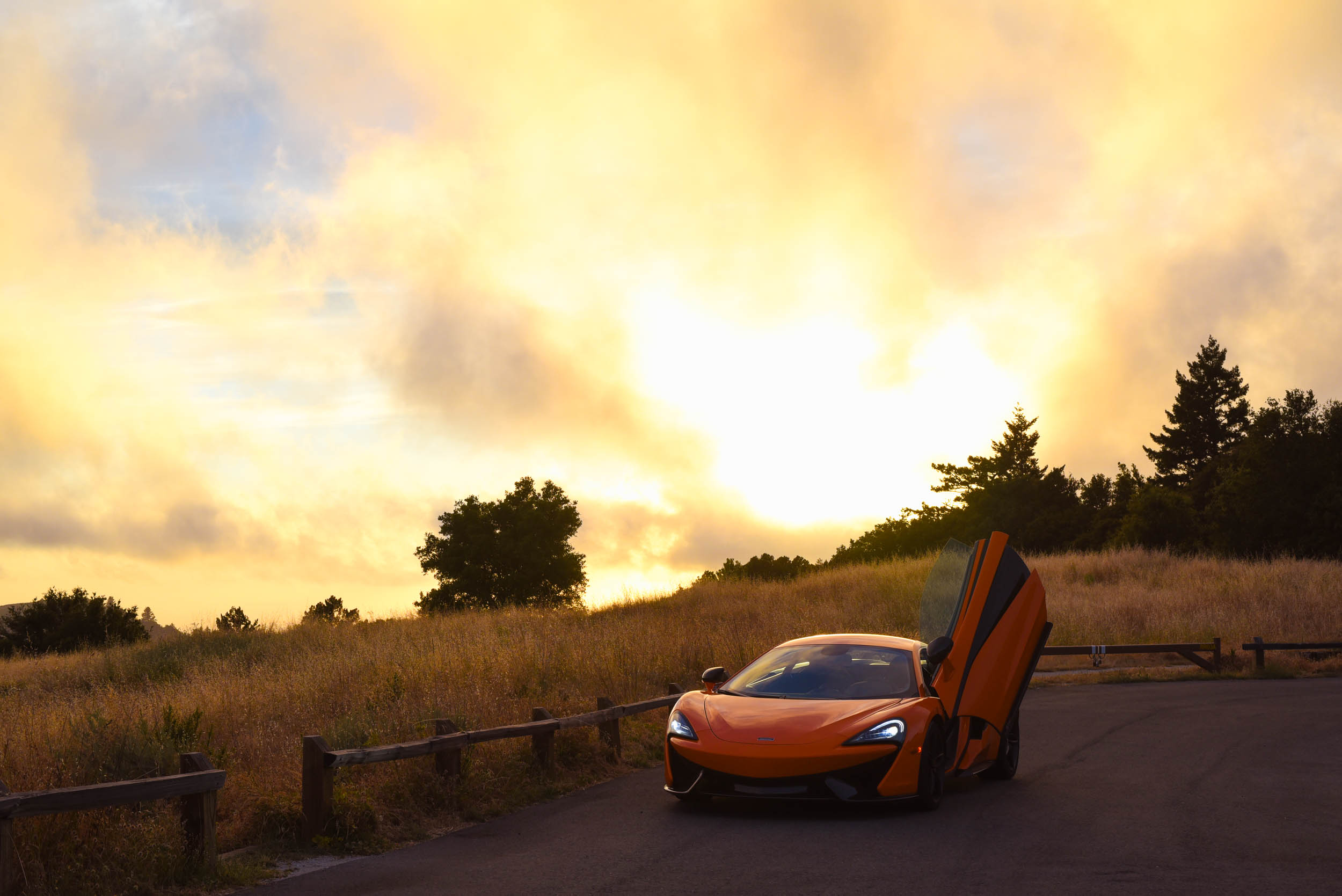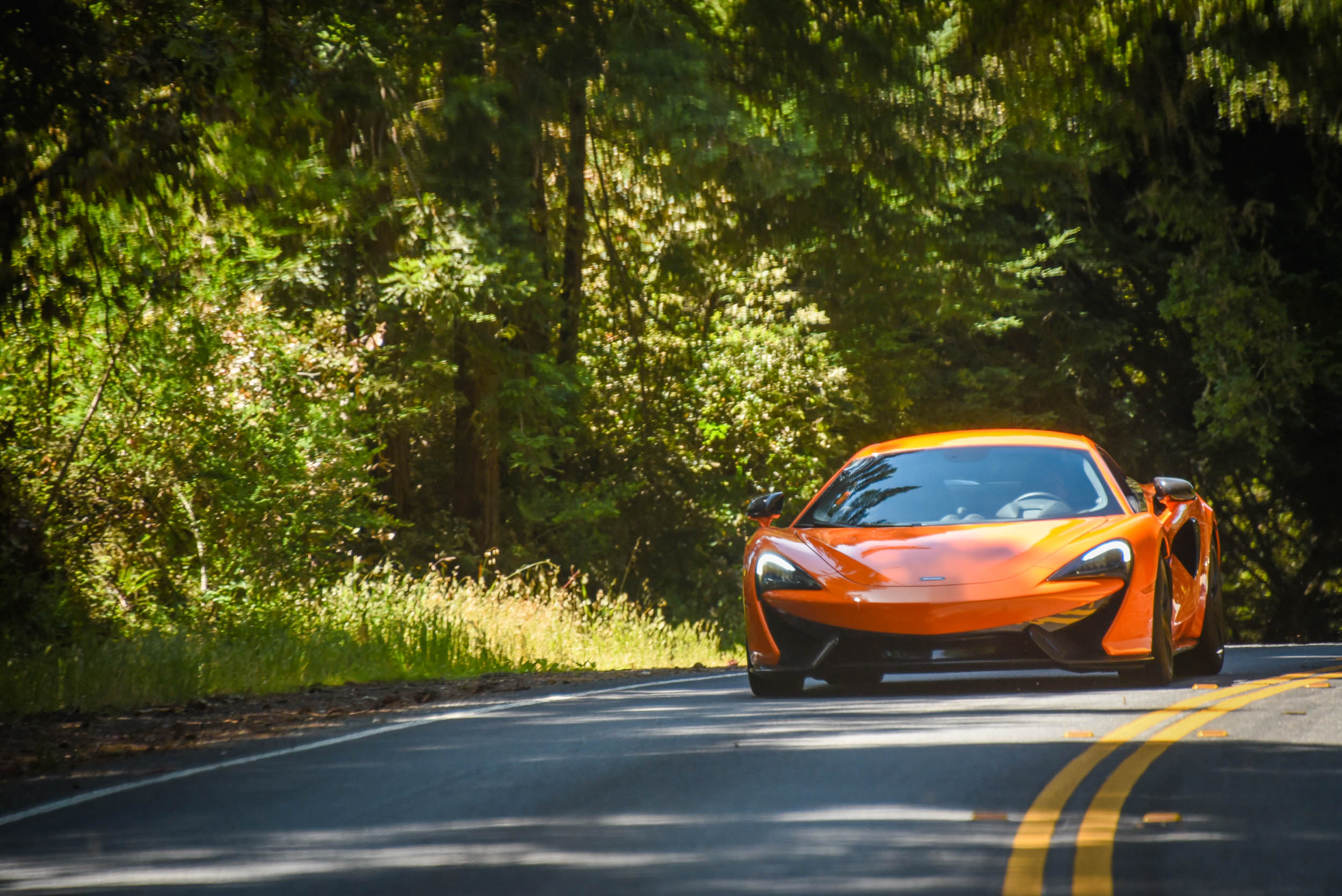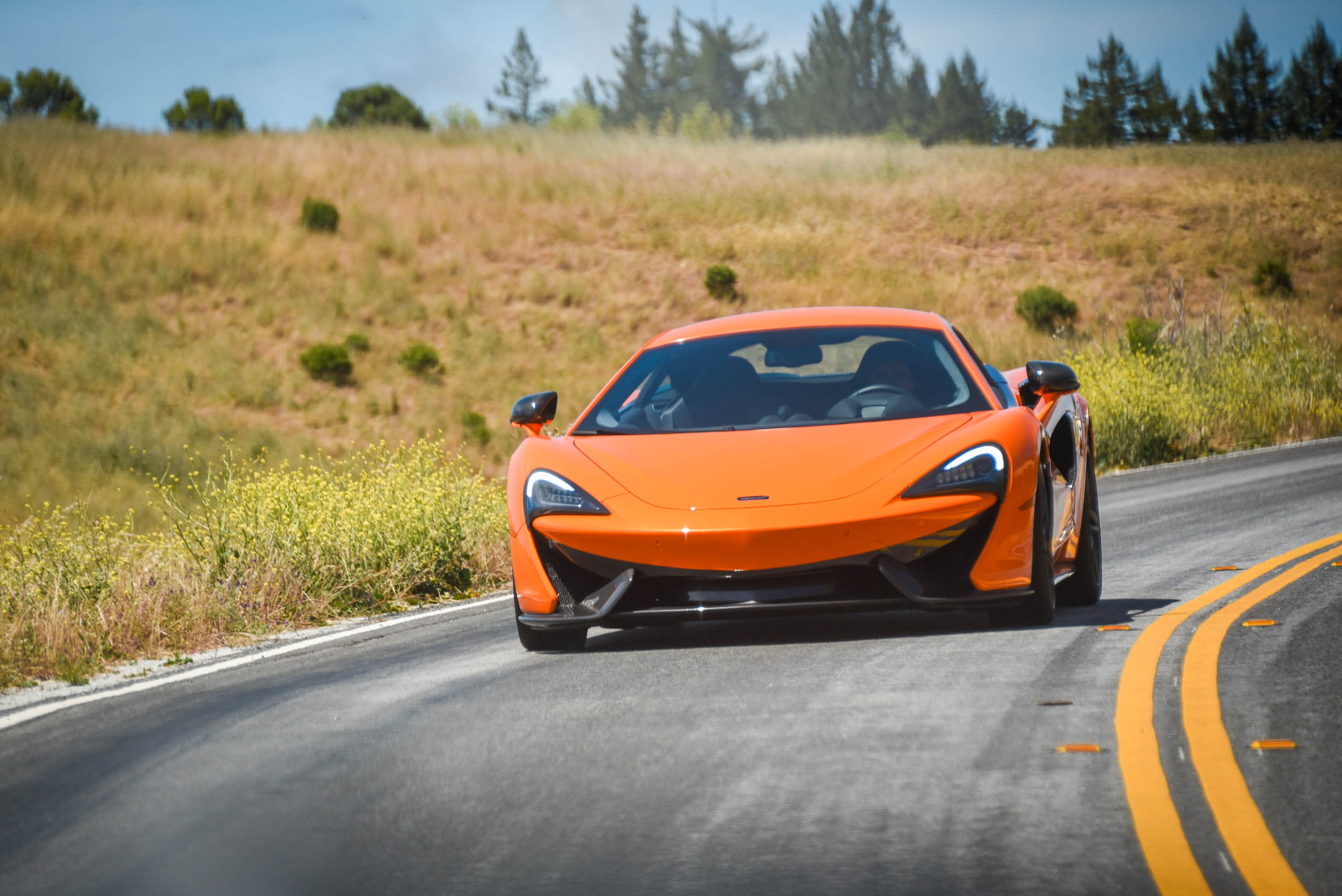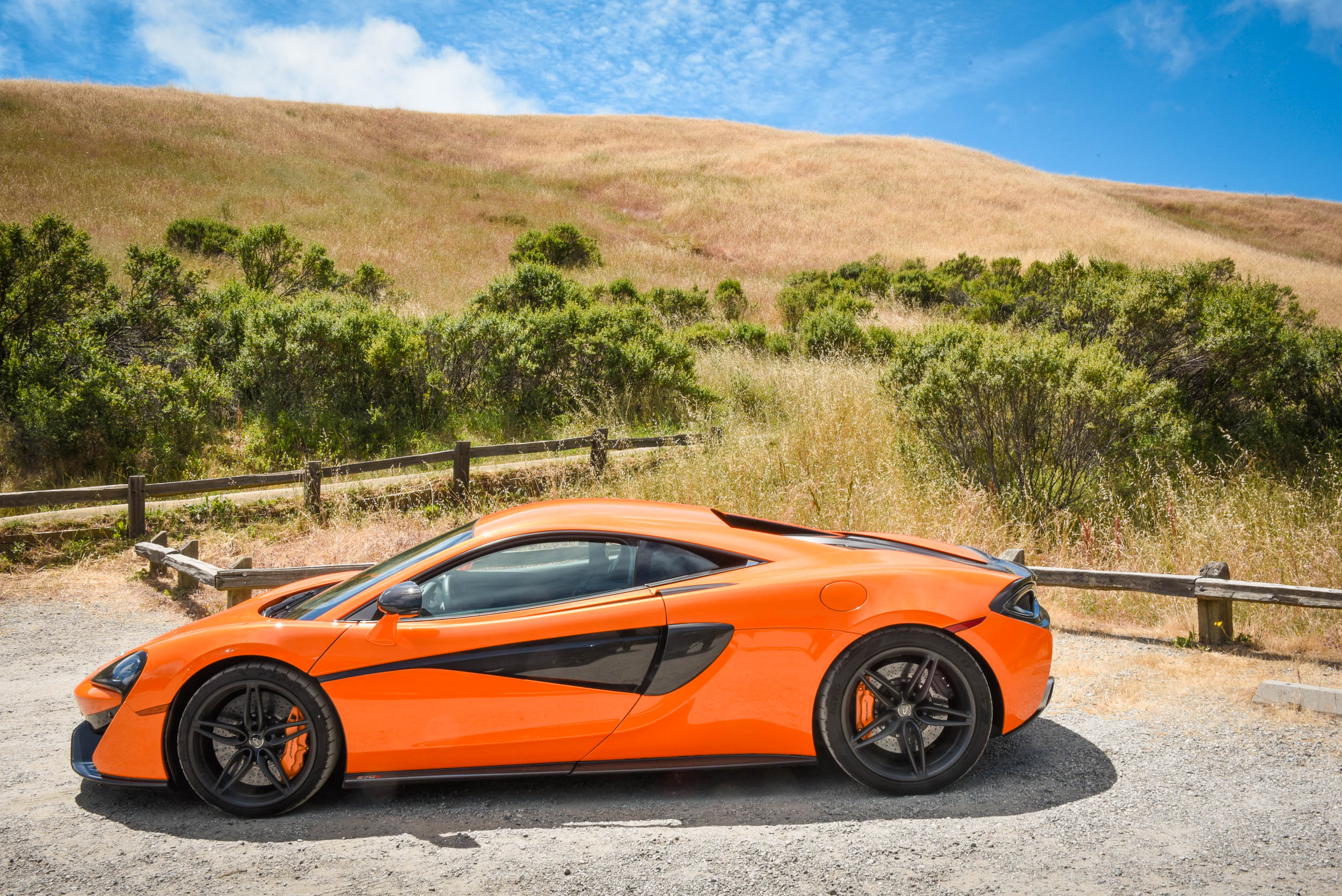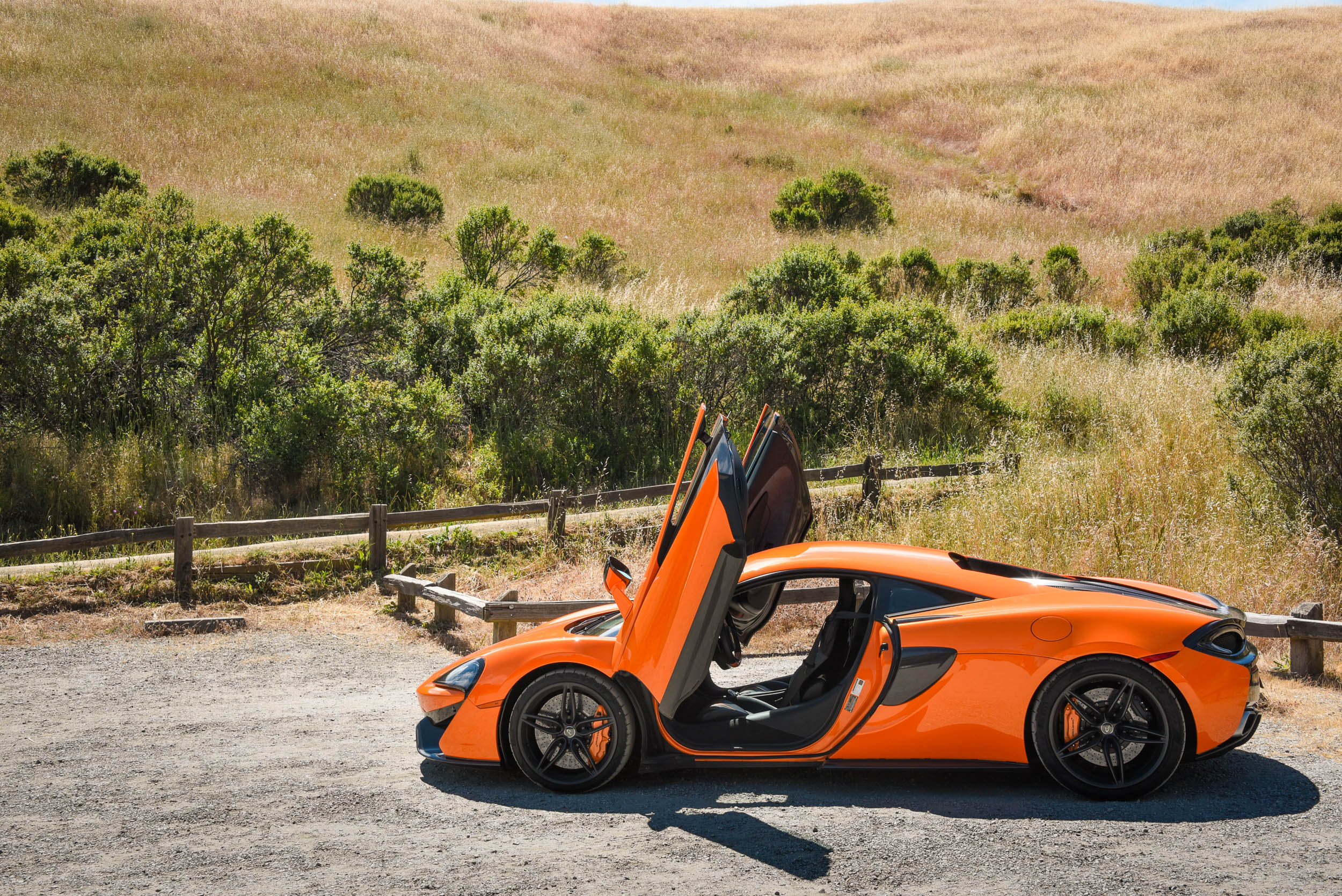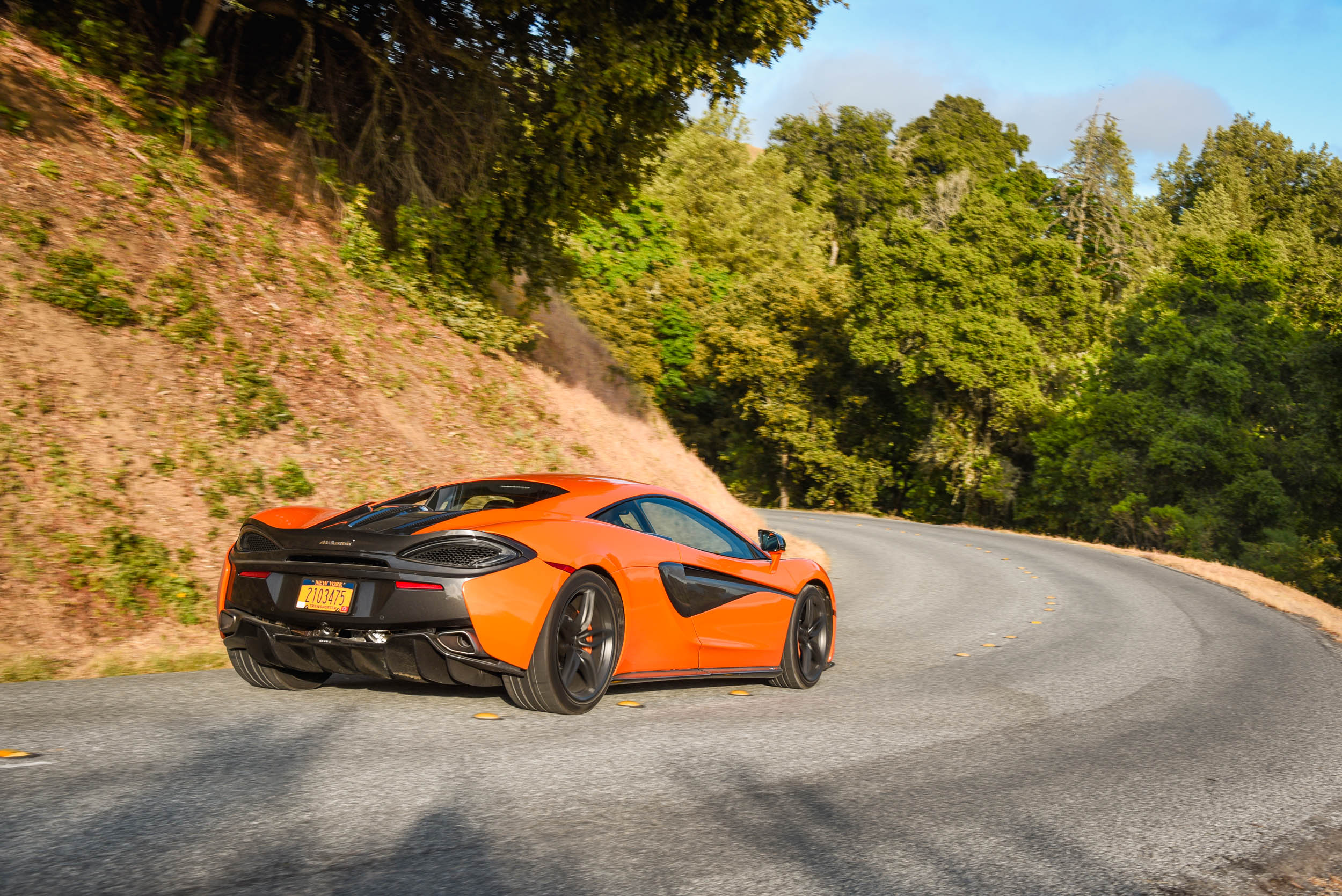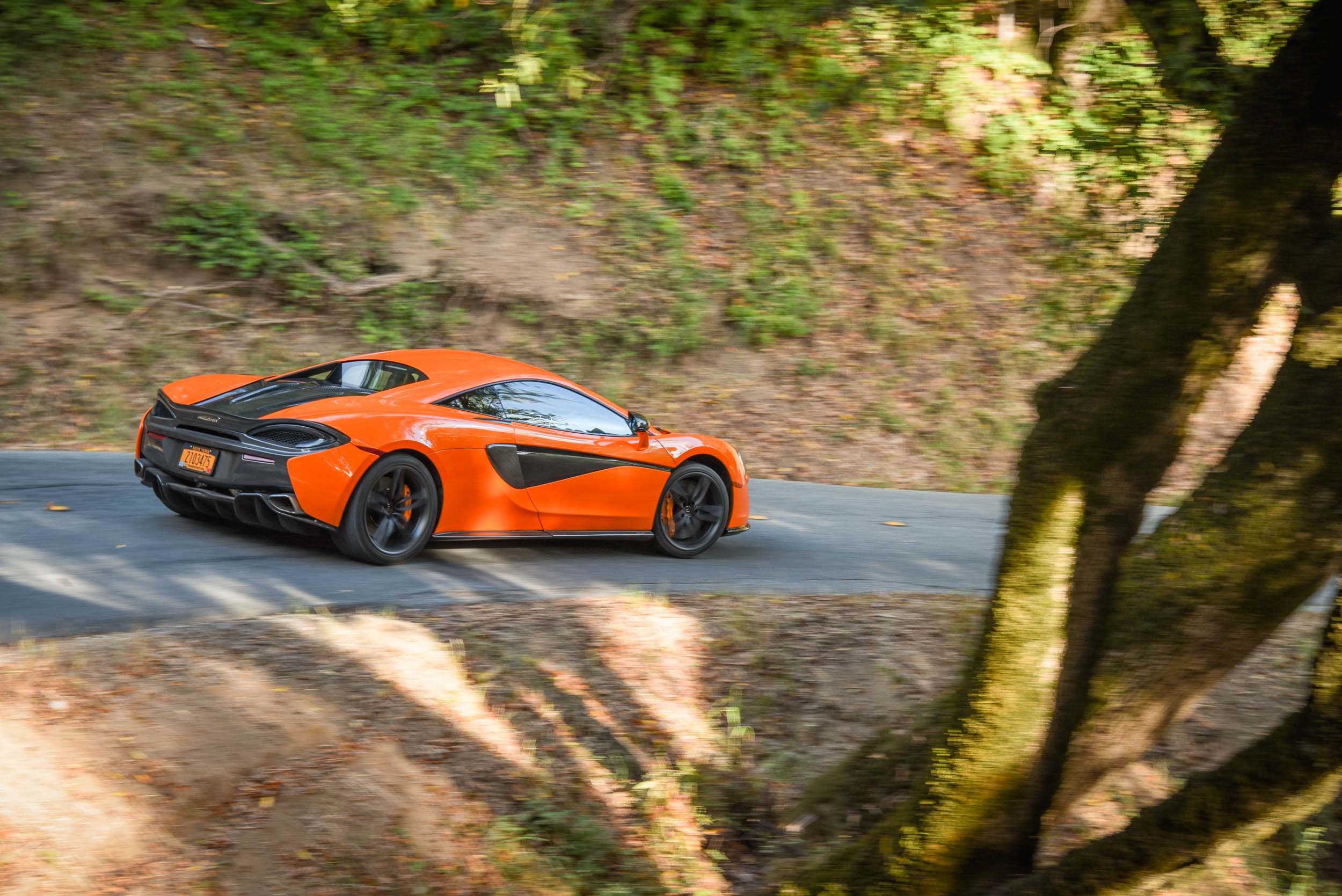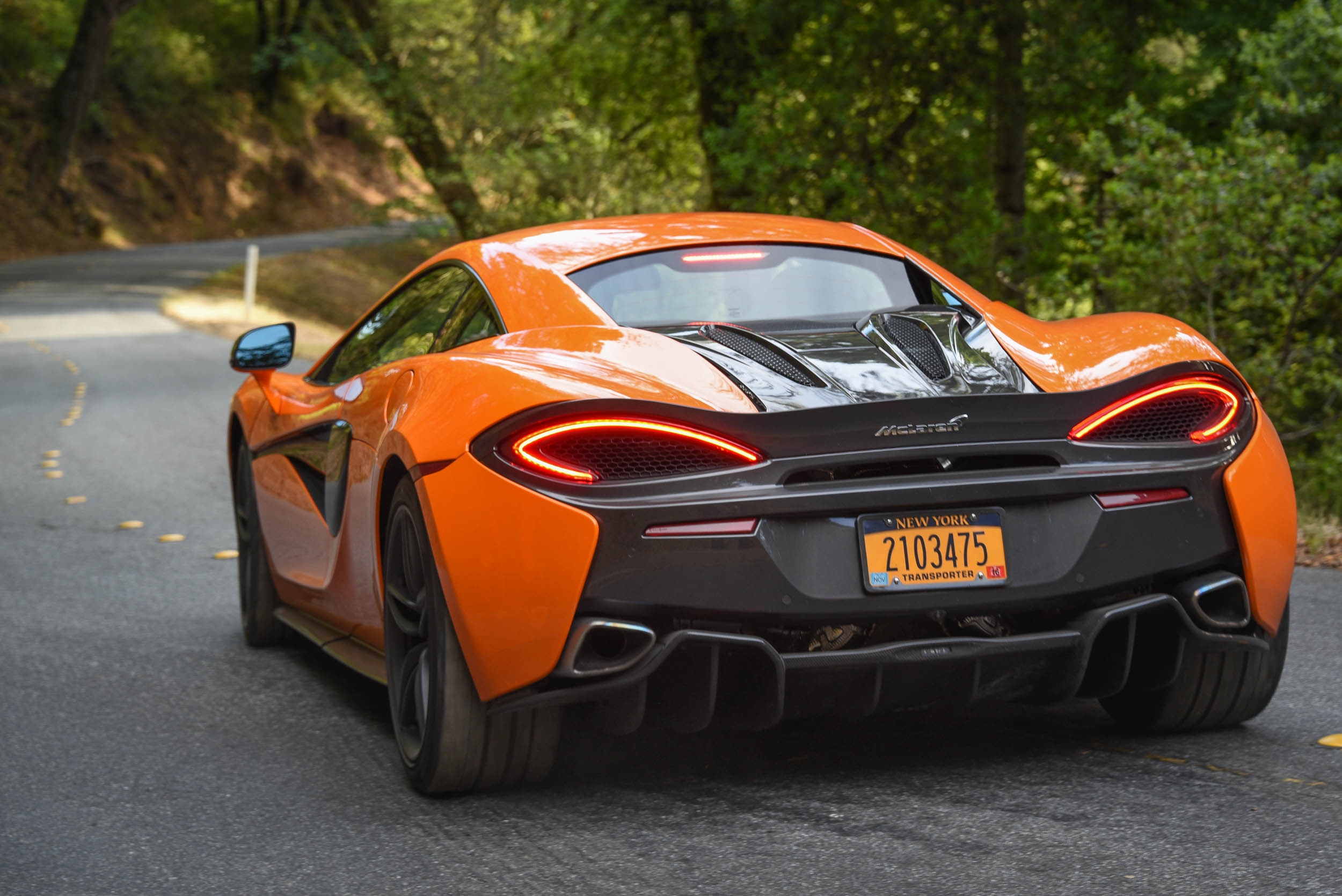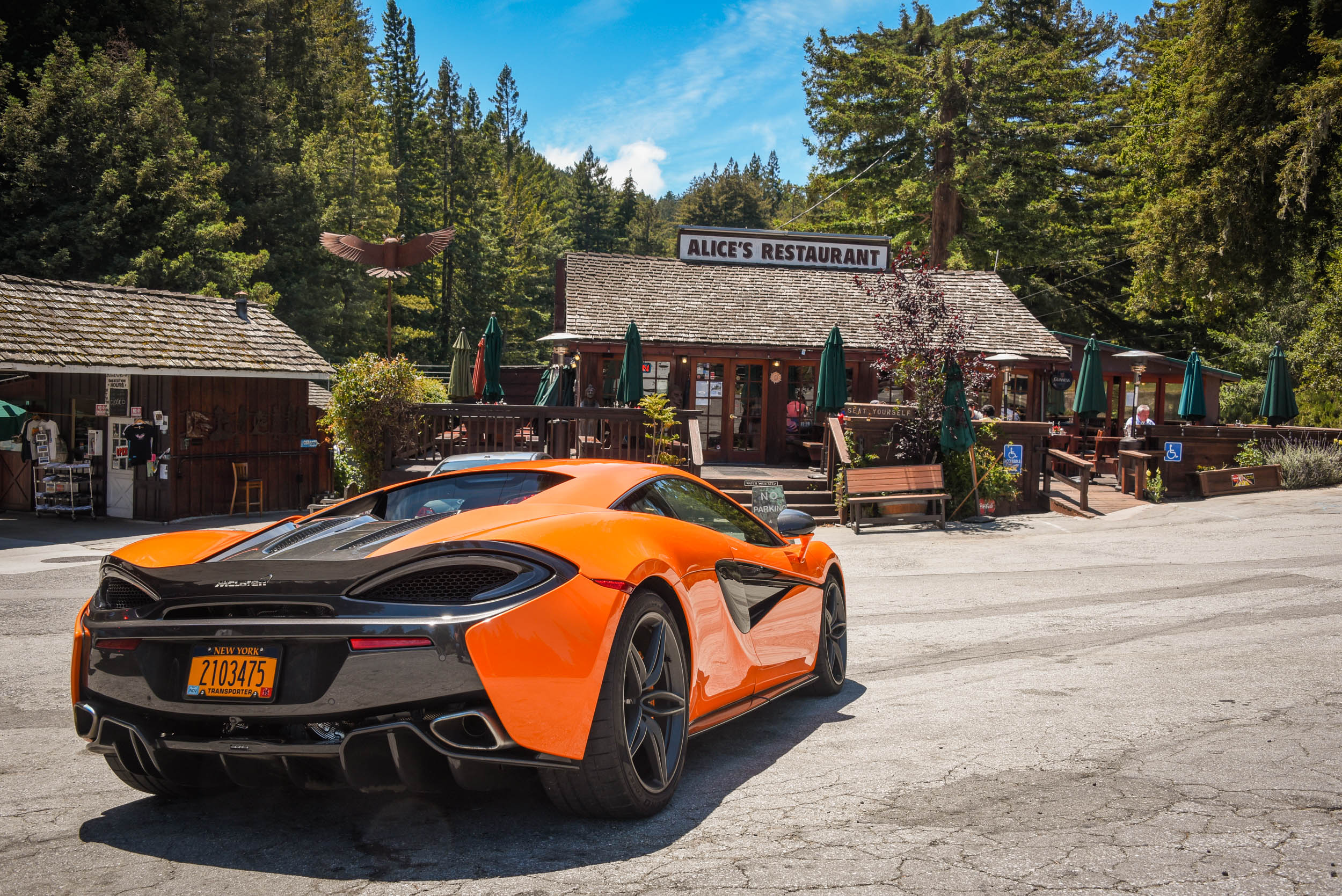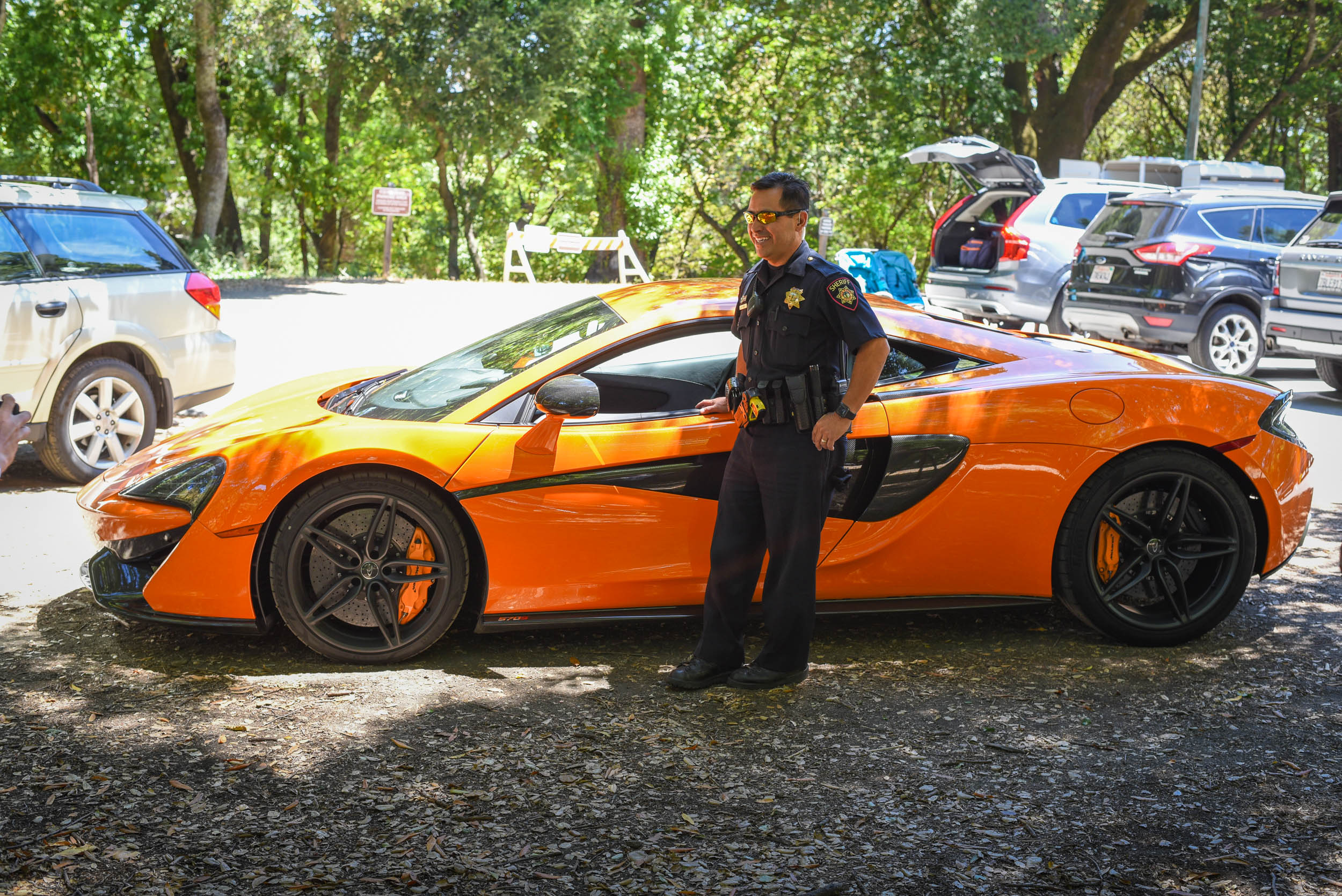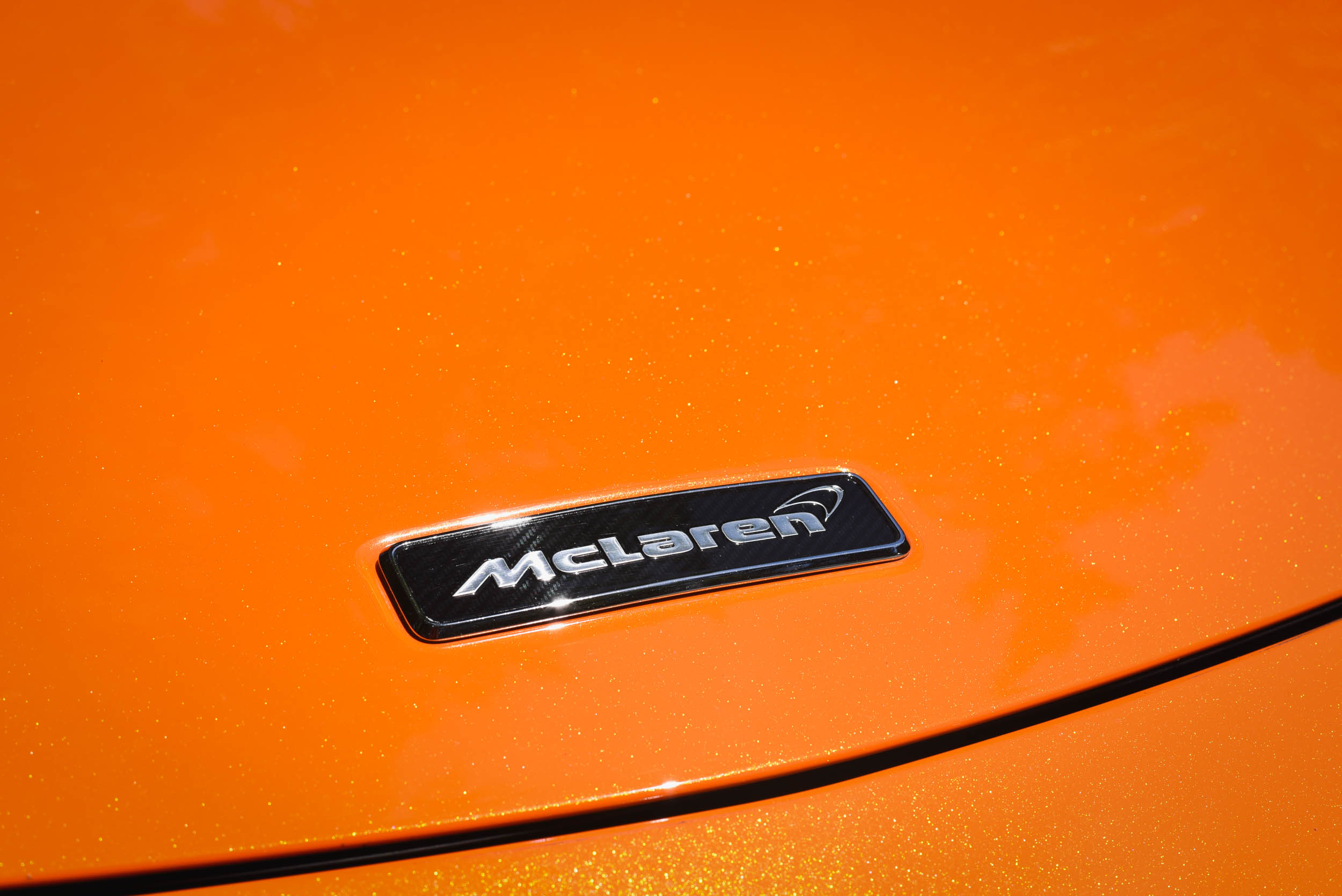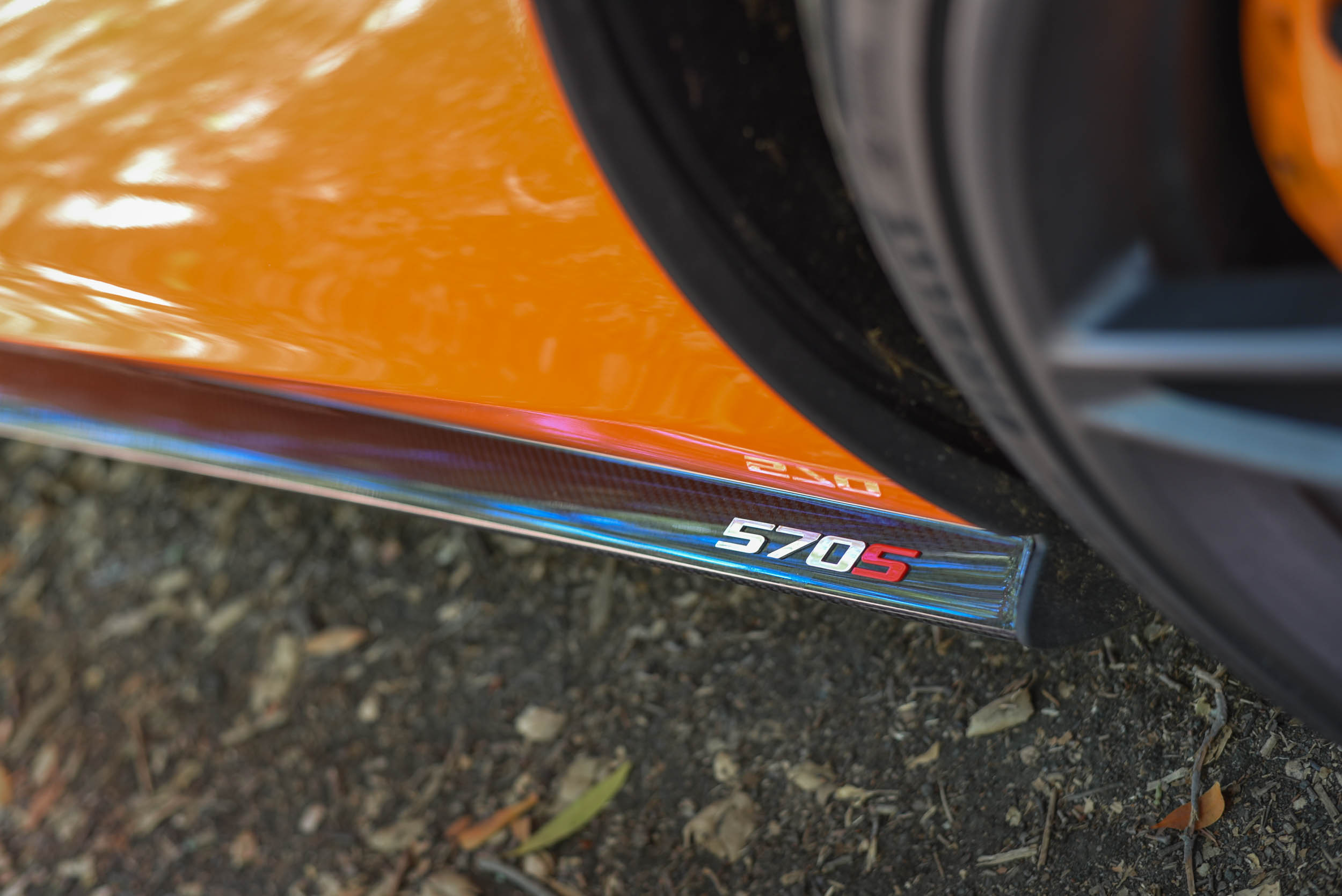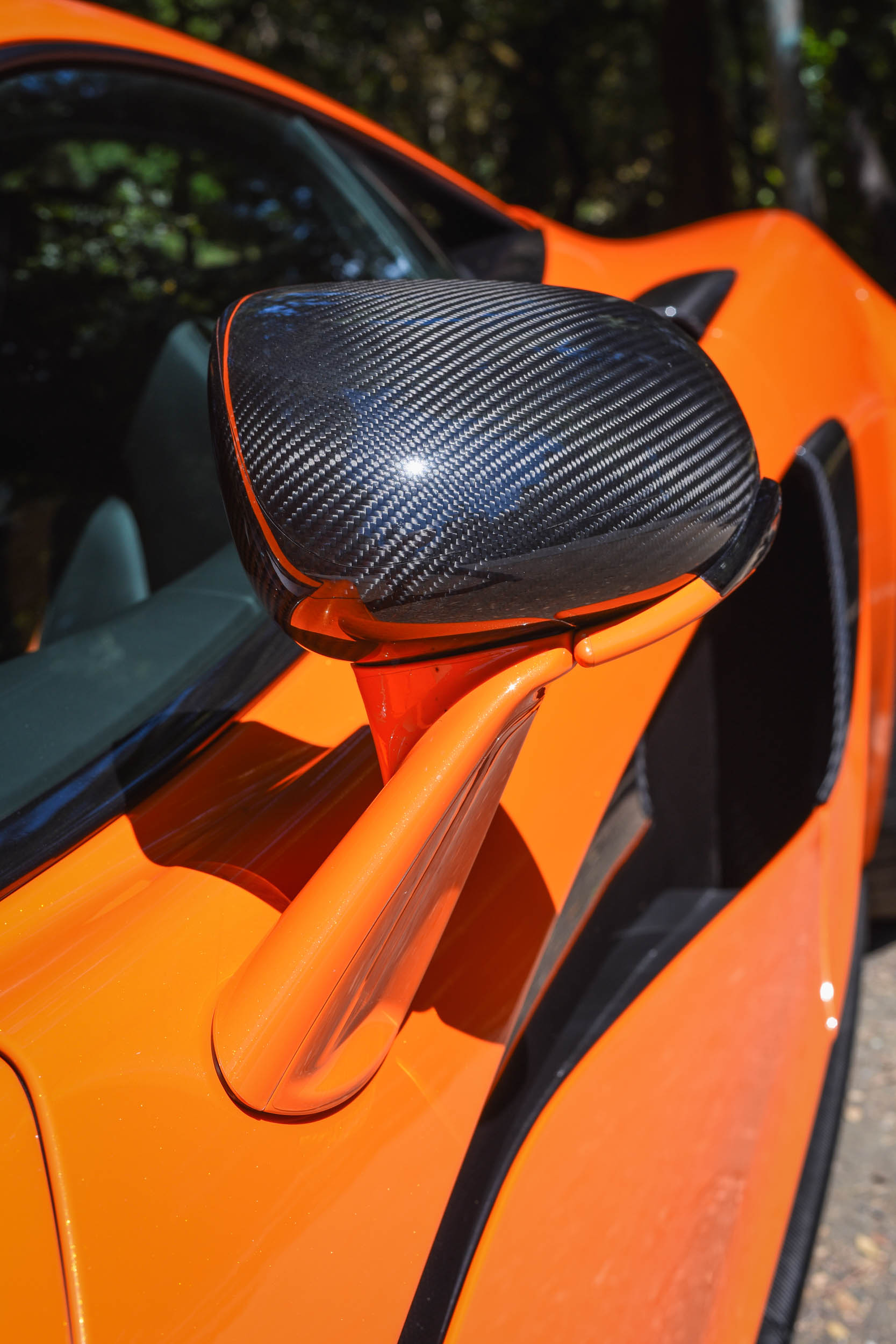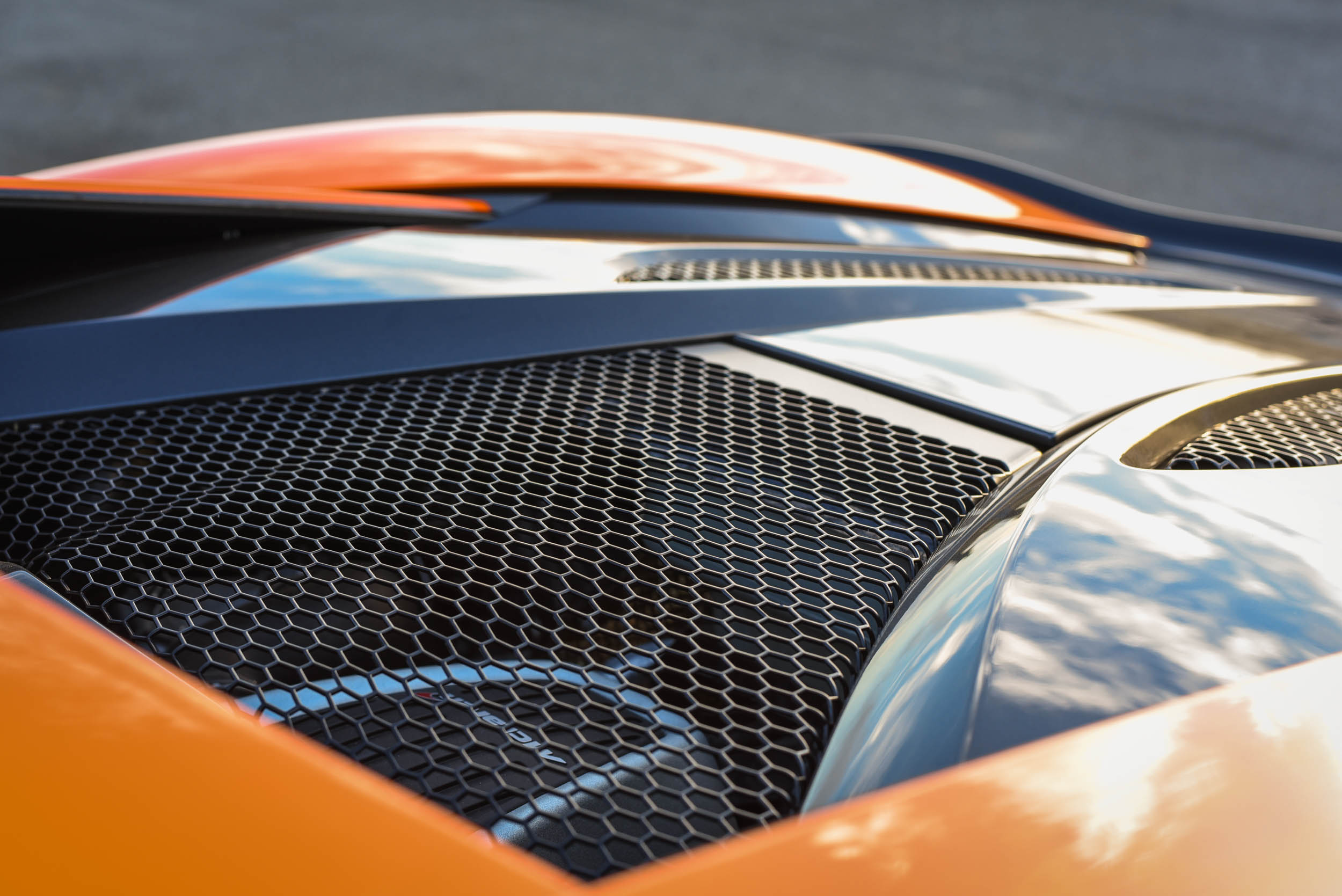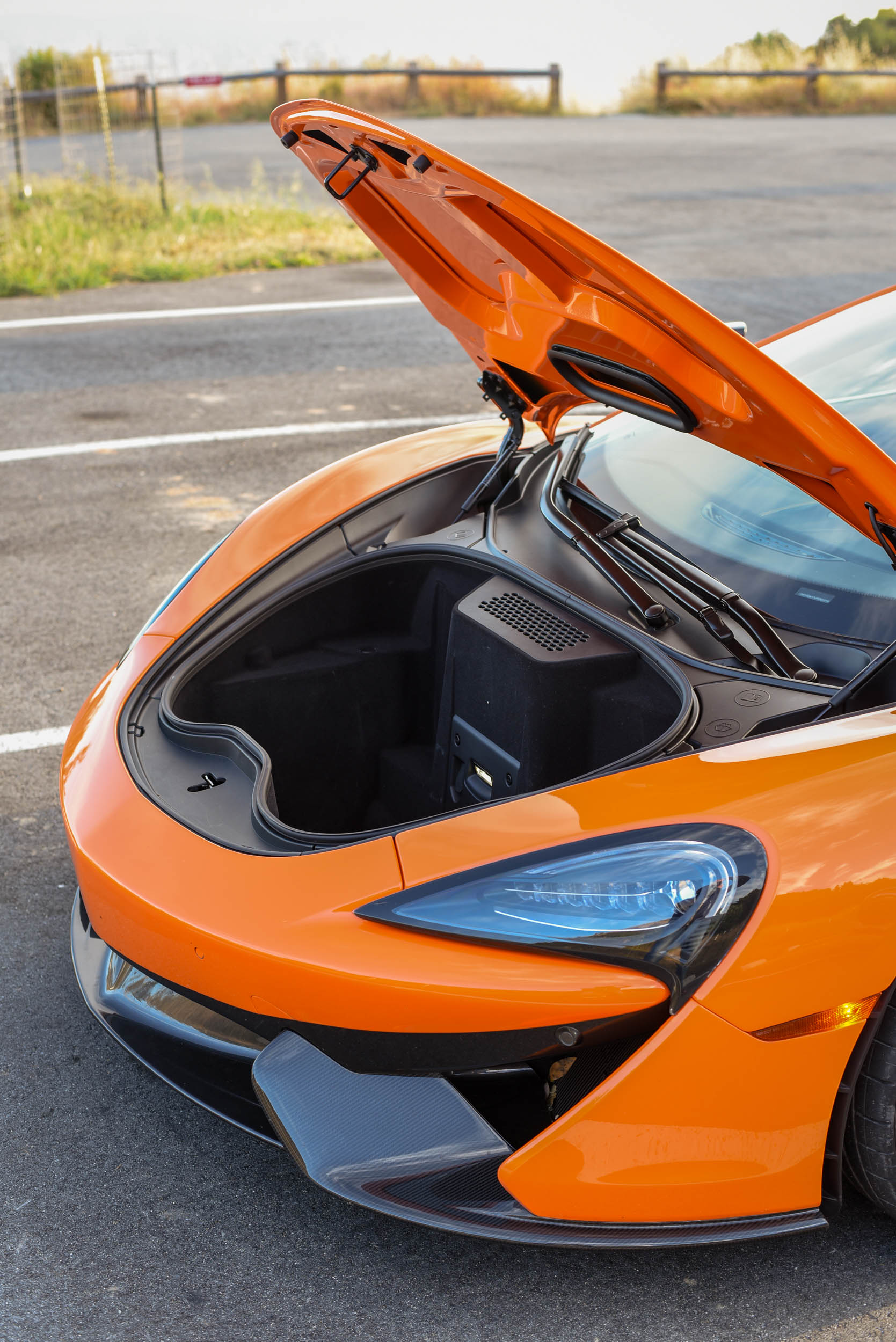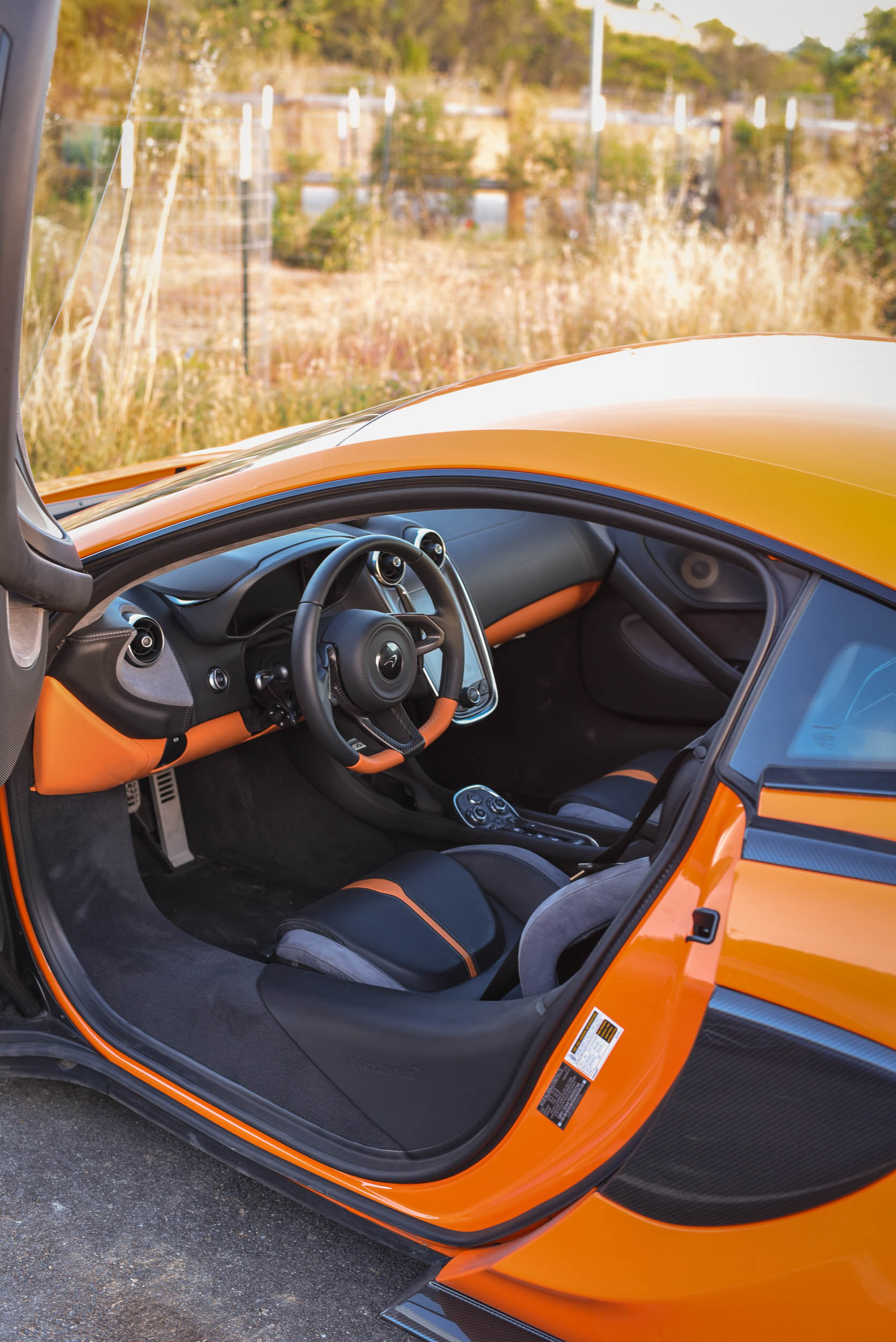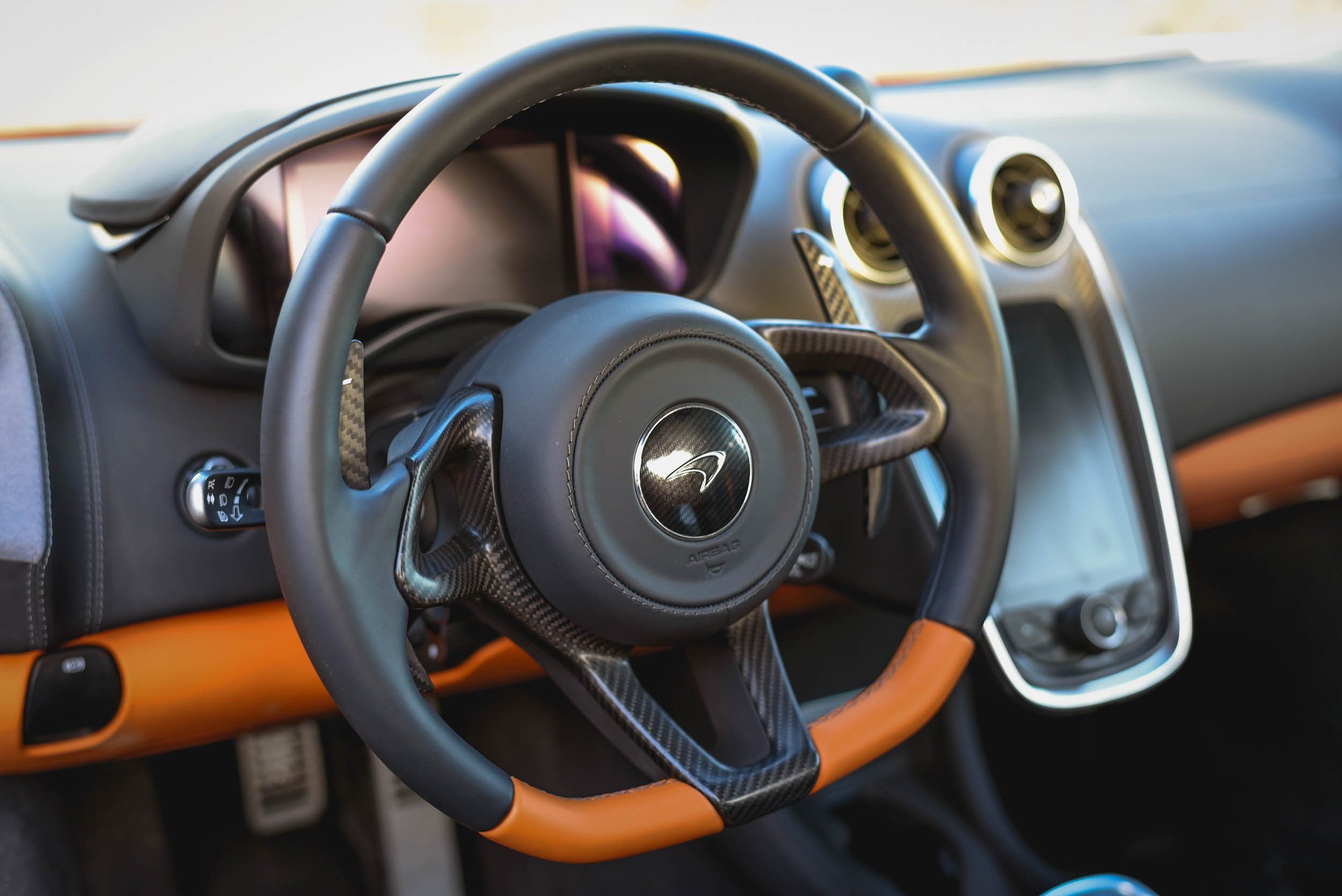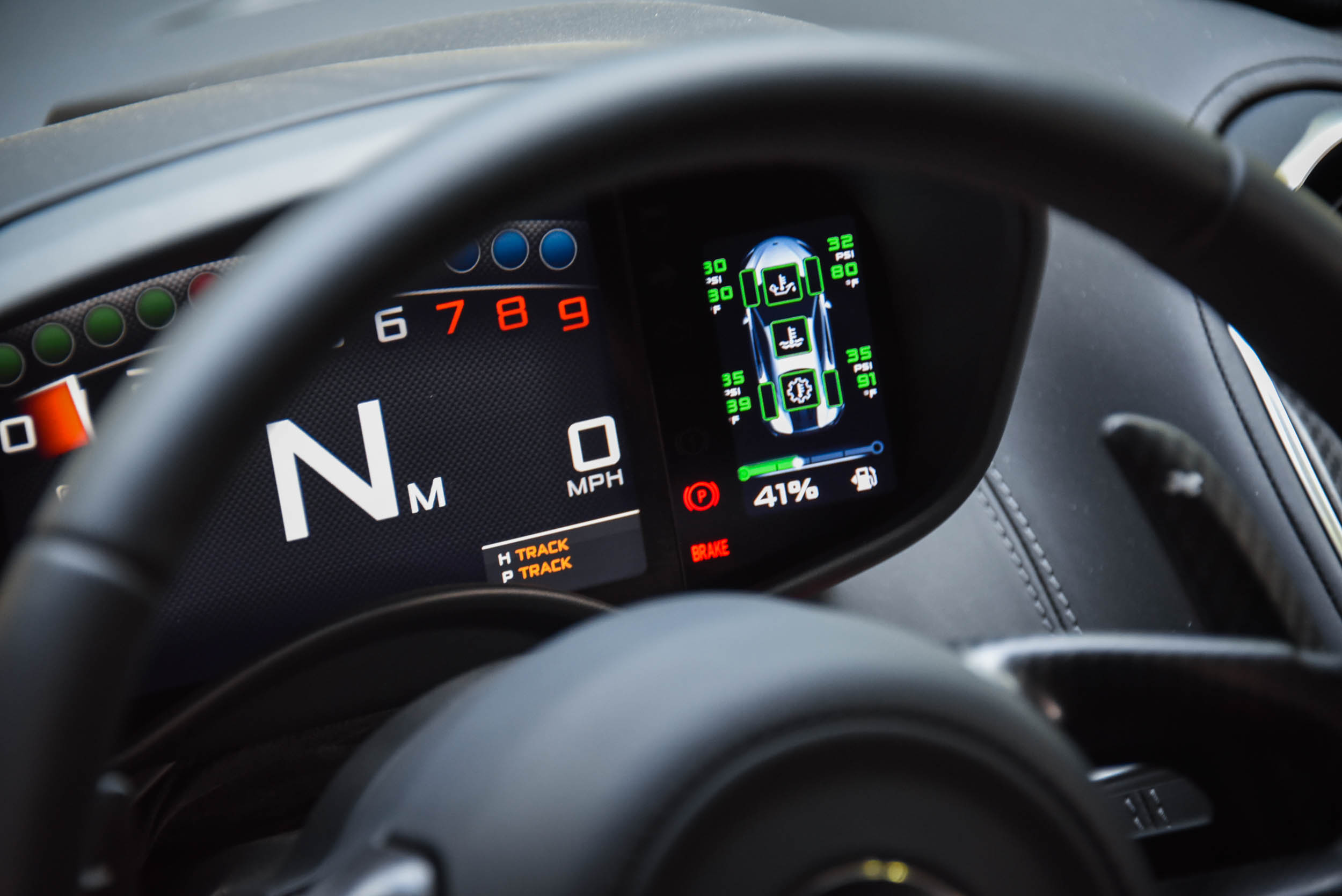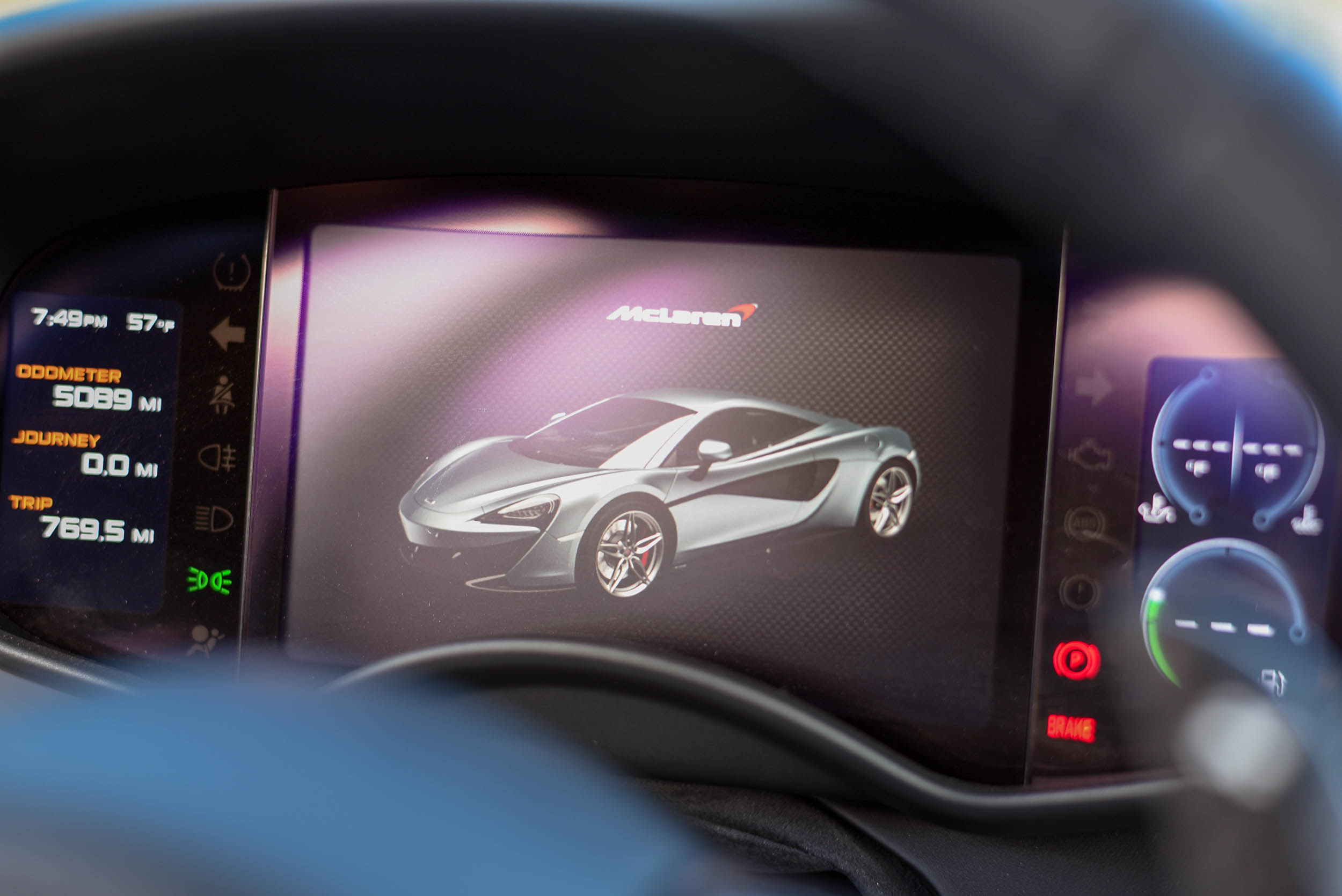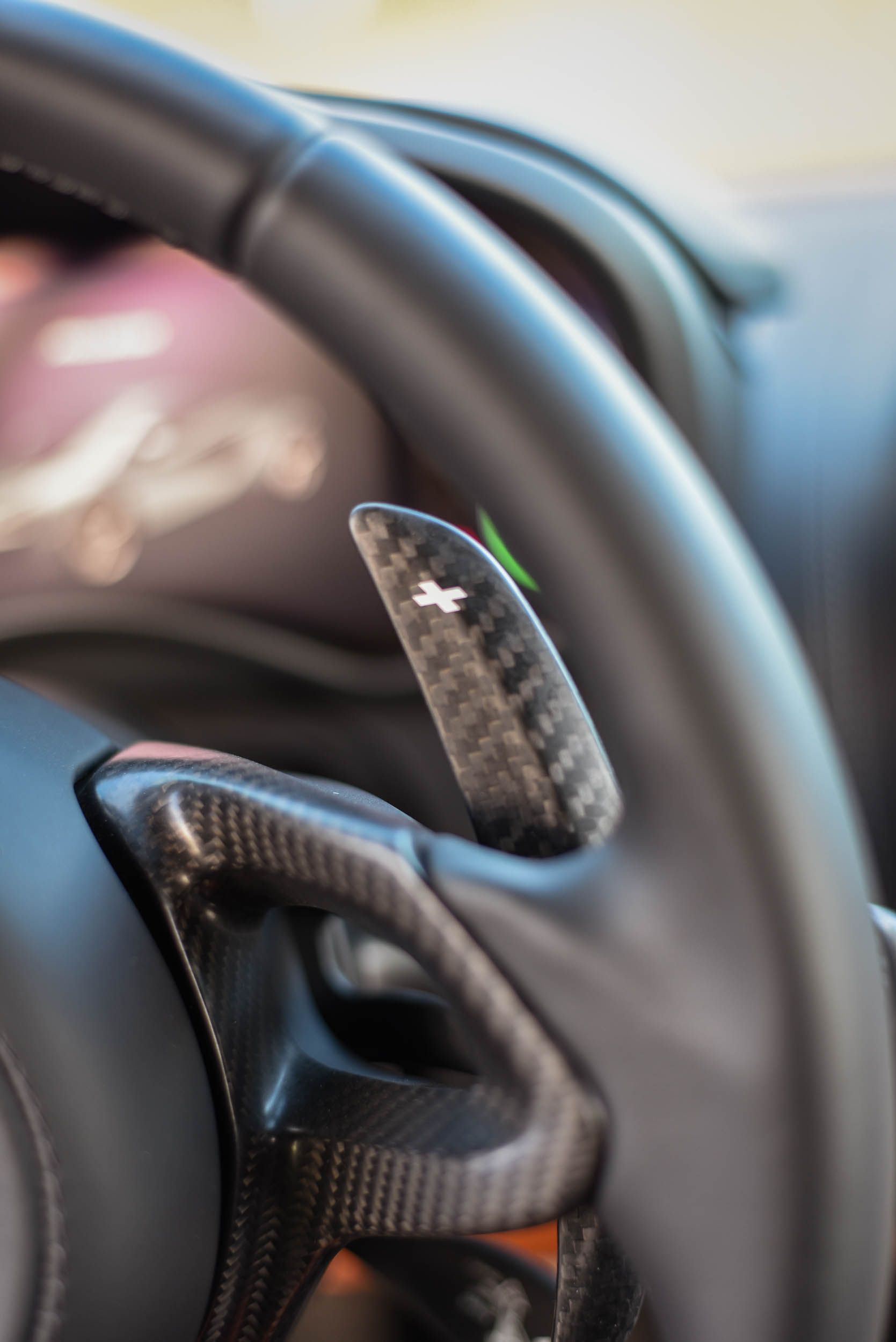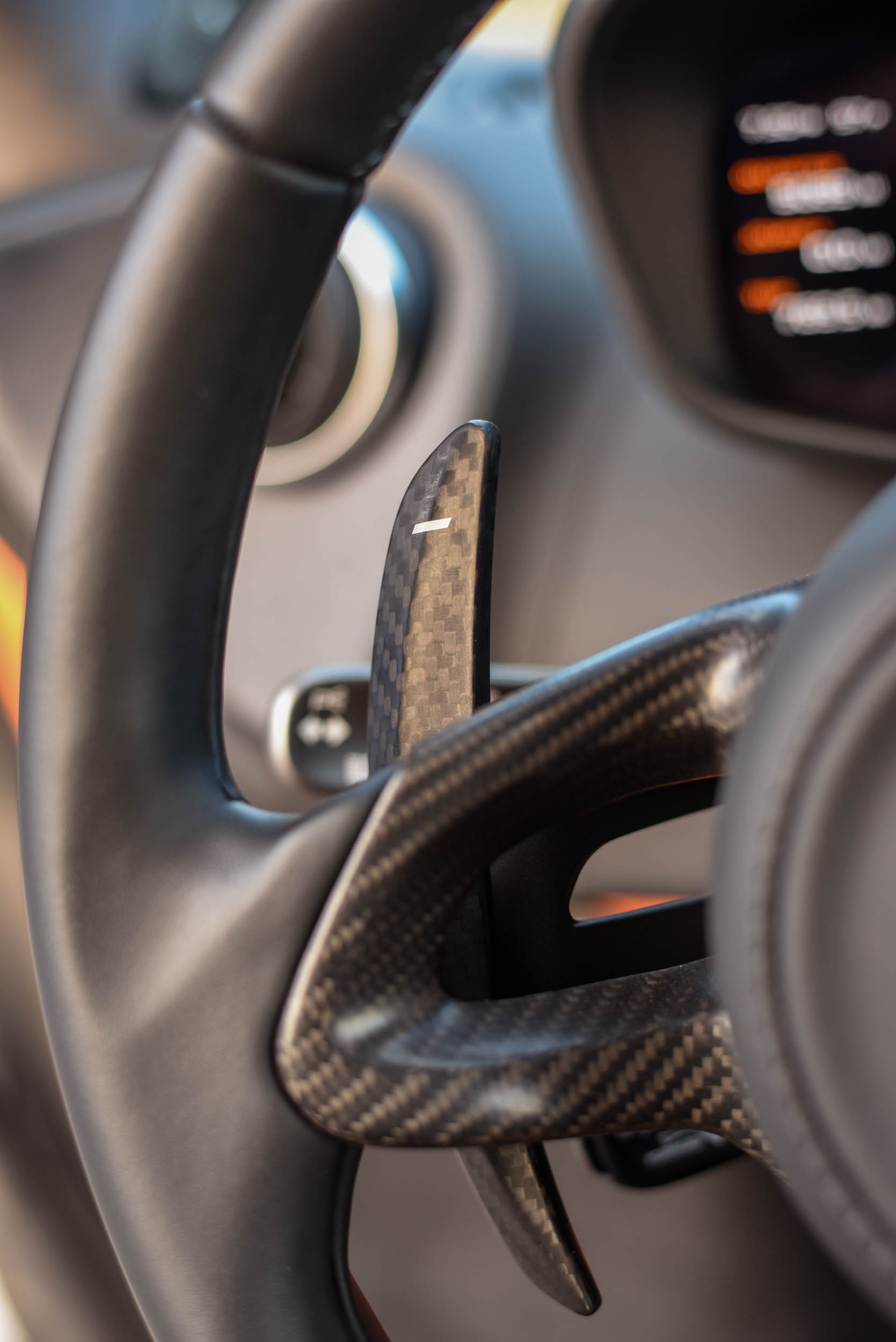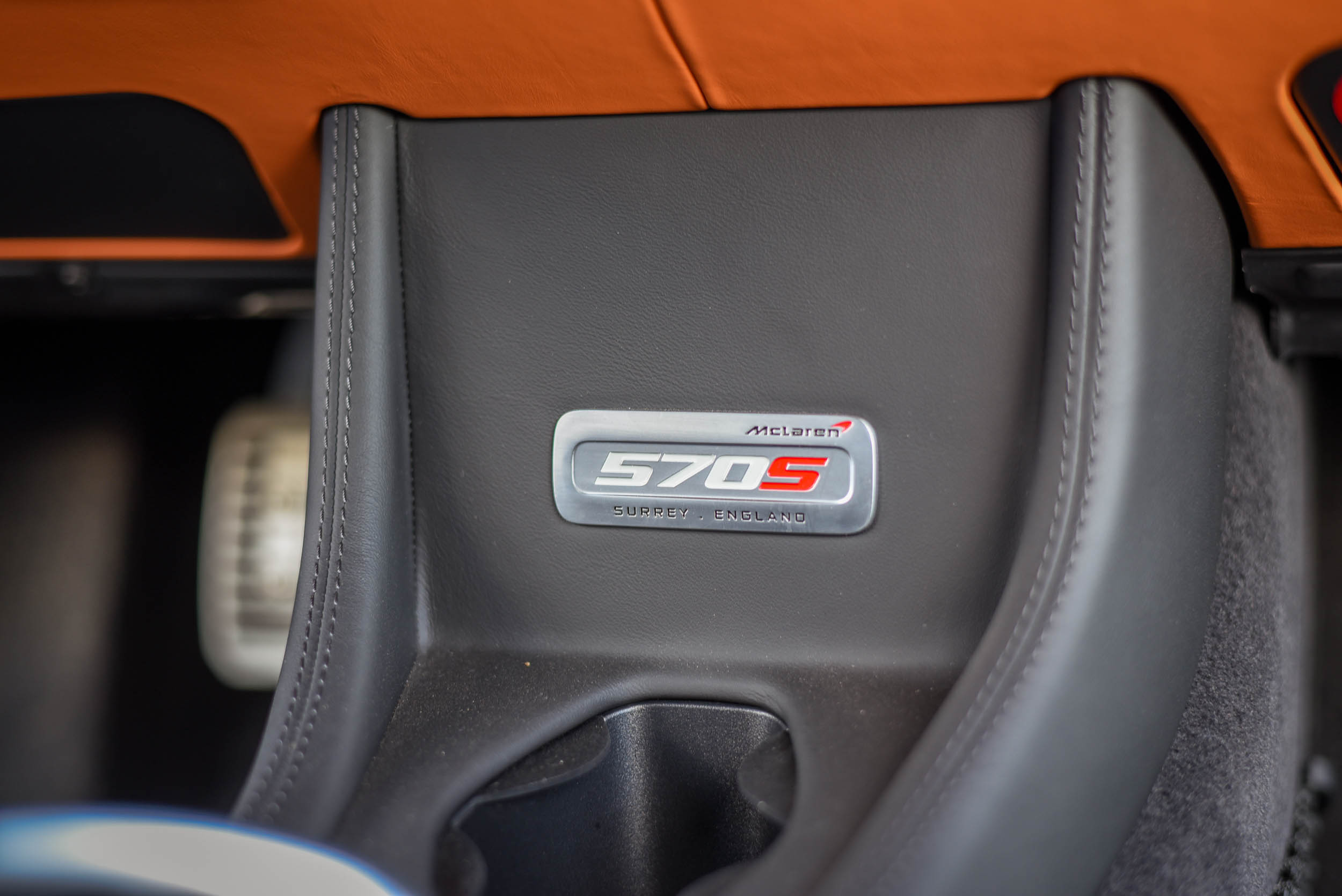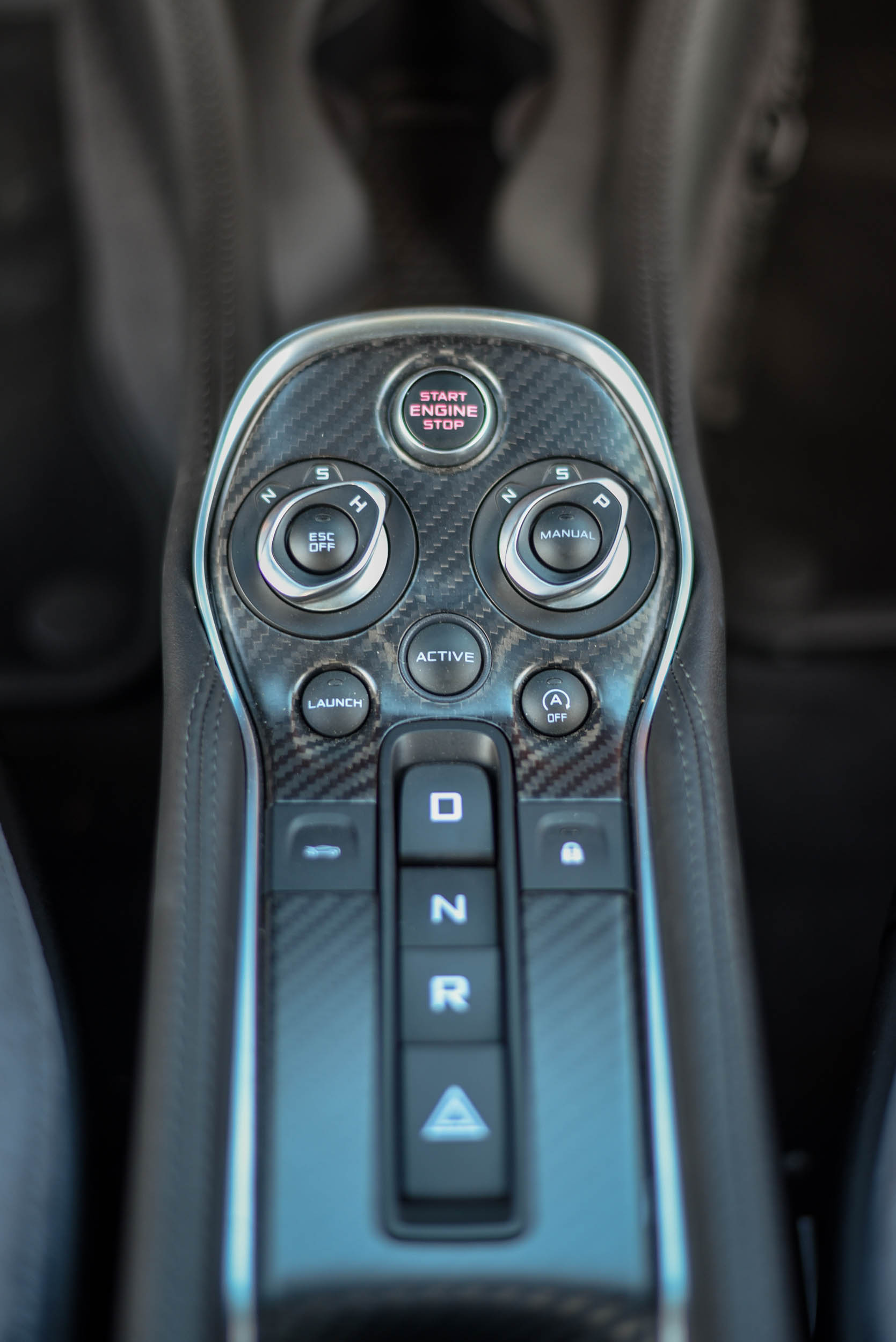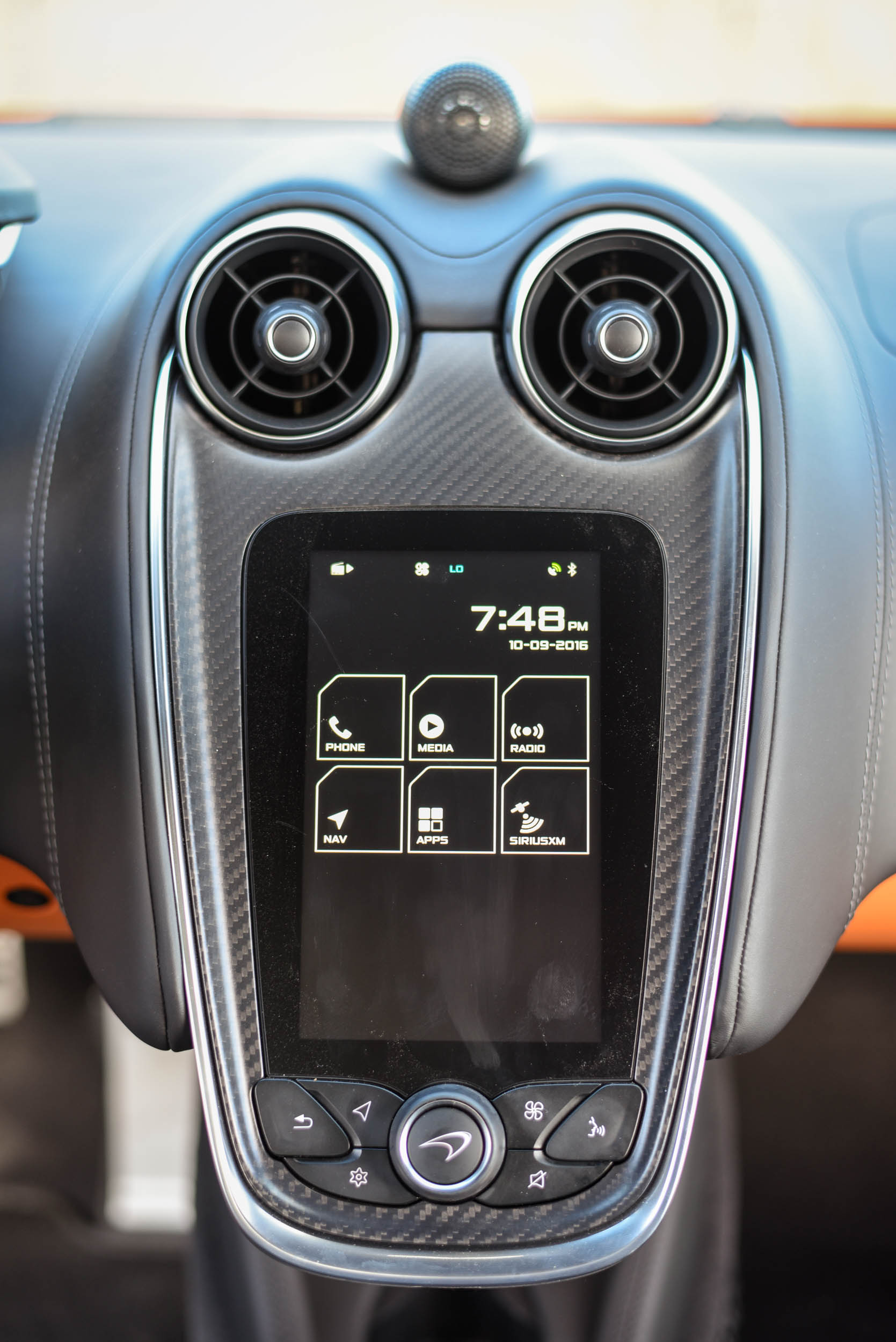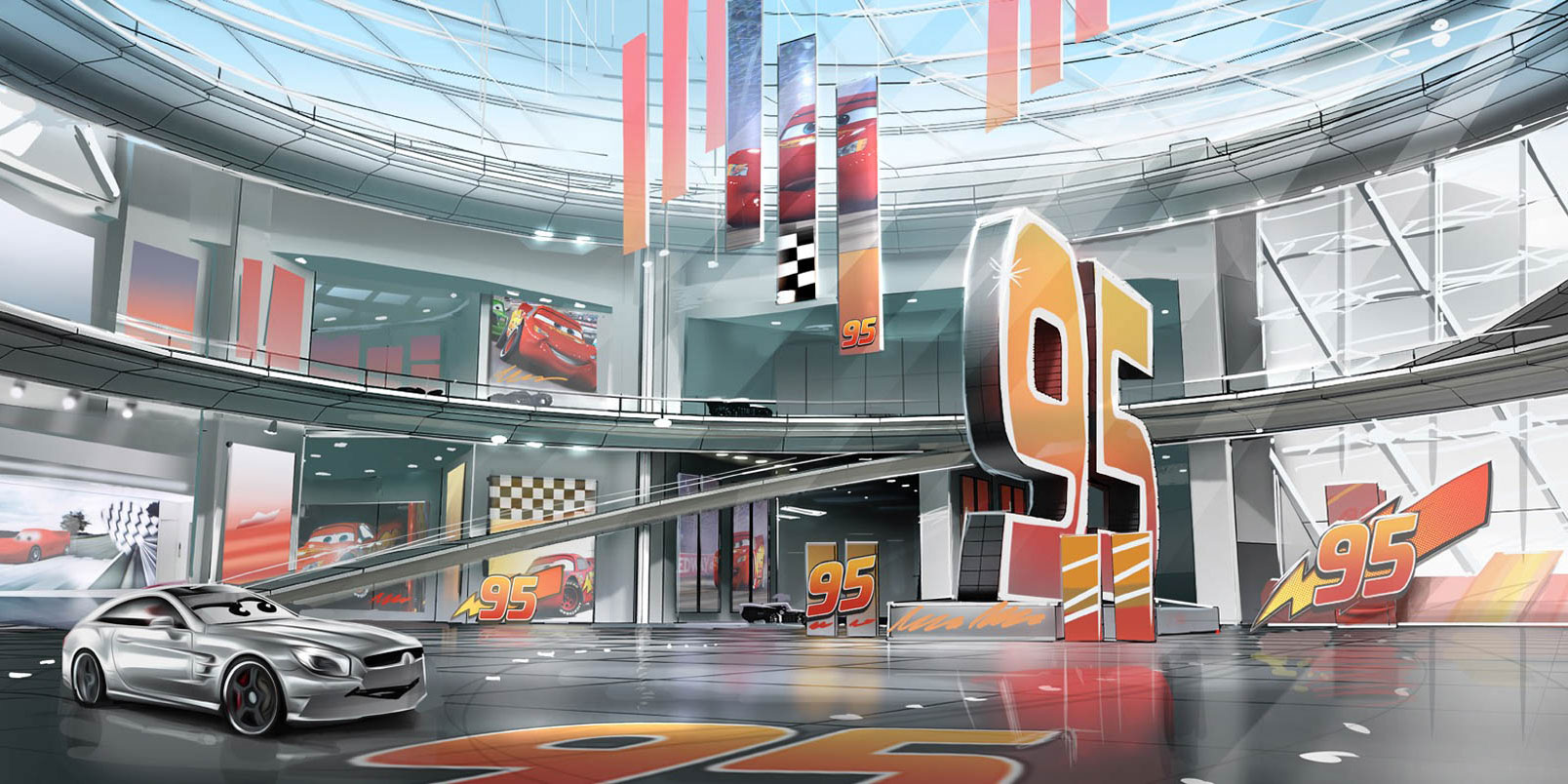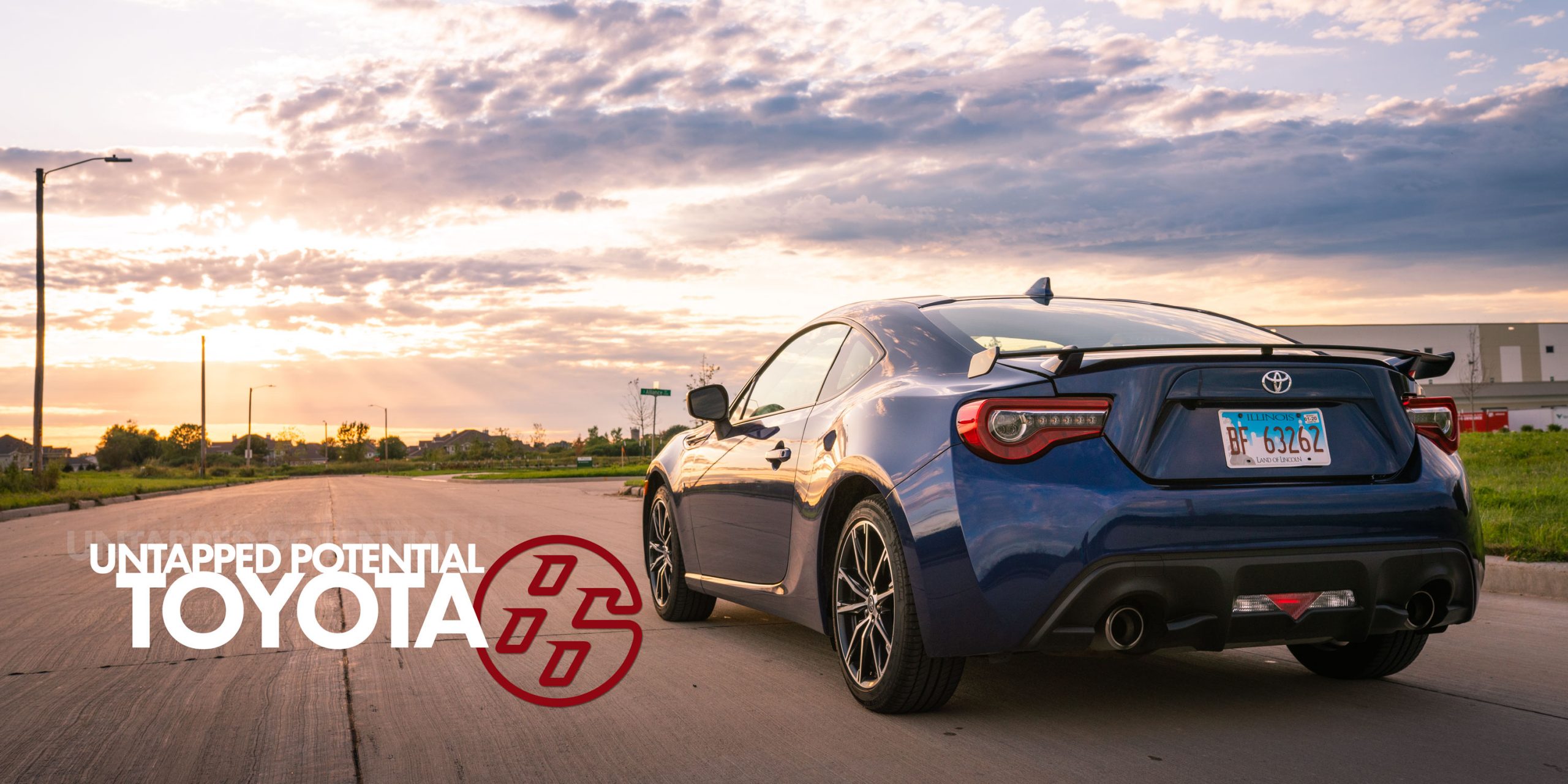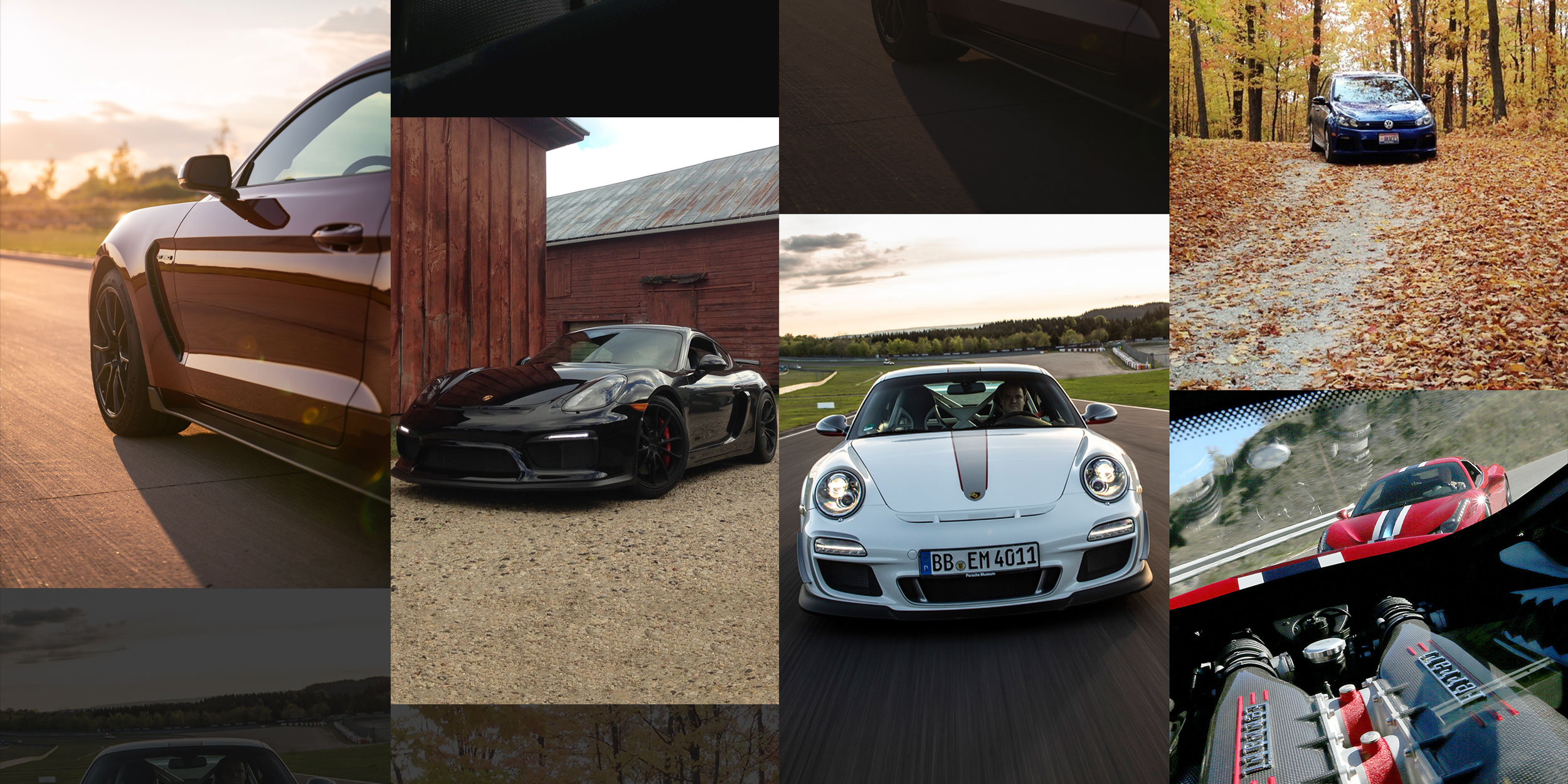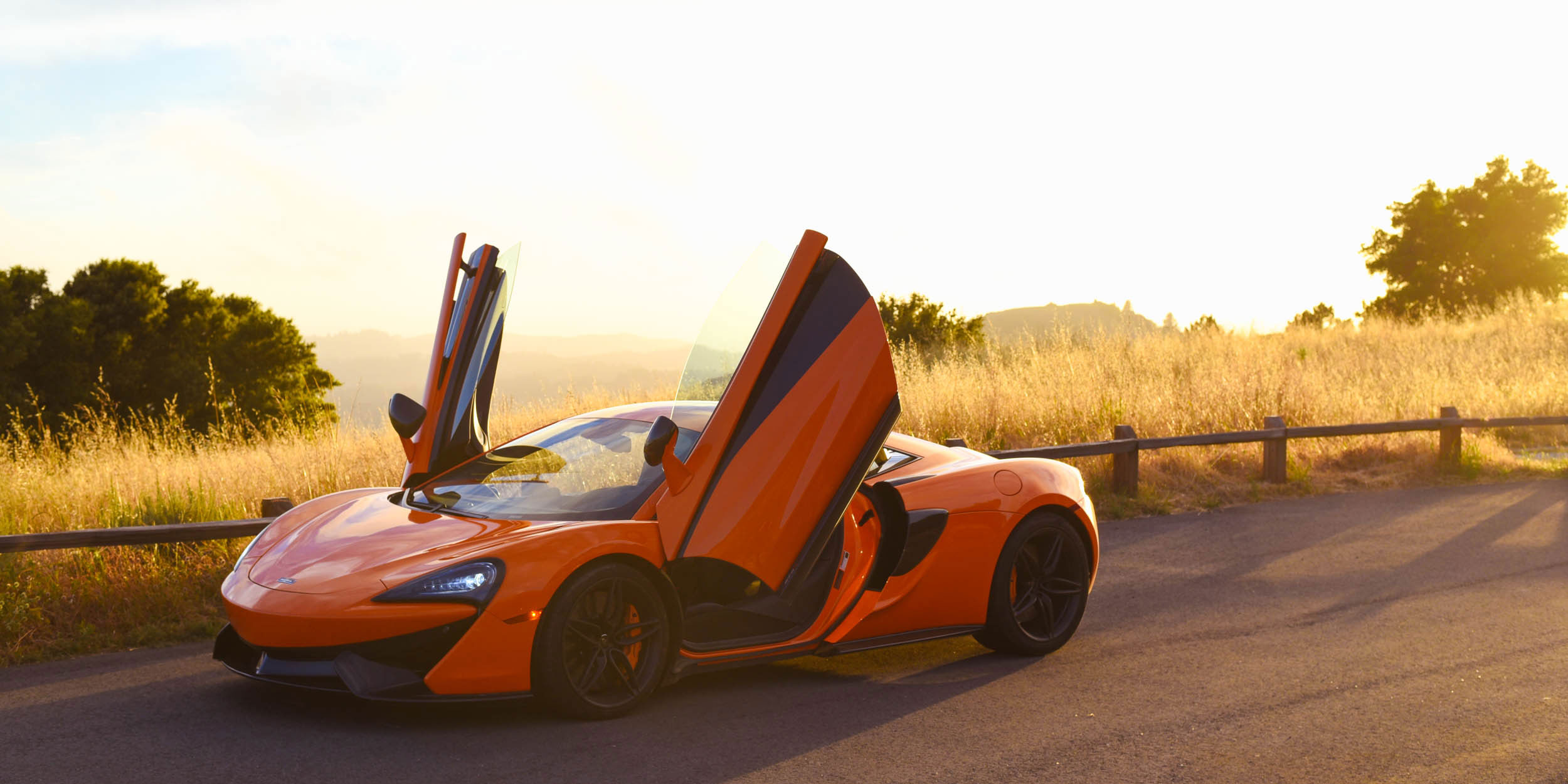
Words and Photos by Jennifer Jensen
This is the McLaren 570S, the “entry-level” McLaren. That means it is the younger sibling (Sports Series) to big brothers 650S and 675LT (Super Series) and the child of big daddy P1 (Ultimate Series). It is the first in the “Sports Series.”
In being the least expensive model in McLaren’s lineup, there are some changes.
The engine is the same basic unit as in the rest of McLaren’s road-going cars. A twin-turbo 3.8-liter V-8 that has been detuned to 562 horsepower from the 641 horsepower the 650S puts out, and far less than the 710 horsepower in the all-new 720S that debuted in Geneva in 2017.
McLaren says the engine is 30% different from the Super Series engines, but it certainly doesn’t feel like it. There are 443 pound-feet of torque on hand, and it is all fed through the same seven-speed, twin-clutch transmission that is in every other McLaren model.
So far, so good.
INTERIOR ACTIVATION
The chassis is comprised of a carbon fiber tub, now called “MonoCell II” but with lower cut lines for easier ingress and egress. Dihedral doors remain, but the body is now made out of aluminum instead of carbon fiber. Under the chassis is one of the biggest differentiators between the 570S and the rest of the McLaren stable: double-wishbone suspension with adaptive dampers and anti-roll bars in lieu of the incredibly well-behaved interlinked hydraulic tubes in the company’s other models.
Climb inside the cockpit, and there is plenty of room.
The buttons, switchgear and gauges will look familiar to anyone that has ever planted their hind parts in a McLaren, including the same shift paddles you will find in a P1 and the same set up switches on the center console. Those switches adjust the chassis from normal to sport to track. The knob on the left adjusts powertrain, and the one on the right adjusts handling (suspension).
Just don’t forget to hit the “activate” button in between the two knobs first. Otherwise, those knobs won’t adjust a single thing!
BLIP AND THROTTLE
The starter button sits at the top of the center column, and pushing it not only ignites the V-8 behind your shoulder but also sends chills down your spine every-single-time. The V-8 has a sharper bark to it than in McLaren’s other cars, and the company says the exhaust is unique to the 570S. It sounds fantastic.
Blip the throttle and the noise just gets better.
The same push-button PRNDL resides in between the two seats, and like in other McLarens, there is a brief pause after hitting the button before the car responds by selecting the appropriate action.
I push “D” and prepare for blast off. According to McLaren’s press briefing, the 570S will hit 60 mph in three seconds and go on to a top speed of 204 mph. I have no doubt that these numbers are accurate after my first firm push on the accelerator.
The first thing I notice, though, is the turbo lag. Below 4,000 rpm, it’s there. It’s not very intrusive, but it is there.
The next thing I notice is that my body has been pushed almost into the engine bay, and the scenery around me is a blur.
Turbo lag be damned!
FAST AND LOOSE
Blip, the next gear engages before the paddle has even retracted completely. Then the next, and I am going obscenely fast on a road that I probably shouldn’t be. Hard on the brakes, and hard you must be as carbon ceramics are standard (iron discs are optional). There is not a lot of feel until a firm foot is applied. Then there is so much stopping power that my body would be in the frunk (you know, the front trunk) if it wasn’t for the security of my seatbelt.
I speed up again and start winding through some fast but blind corners. The car is fast but loose.
The ride is much firmer than that of the 650 or even P1. It is stiff like an over-starched collar, and it’s just as uncomfortable.
I am winding through mountain roads with no runoff and working my arms like Popeye after a can of spinach. The steering is absolutely fantastic, but I begin to sweat. The car is lurching and bouncing all over the road right at the limit of grip and traction. I get nervous and let up. These roads are challenging, and wringing the McLaren 570S through them at speed even more so.
I am bewildered. The 650S would have demolished these roads with another 10 or 15 mph to spare.
What gives?
DRIVER INVOLVEMENT
I had started this drive with both the powertrain and suspension set to “sport” mode because, well, wouldn’t you do the same? After slowing down a bit, I switch both settings to “normal.” There is a difference, but it isn’t as dramatic as doing the same in a 650S.
The ride does not loosen up enough to absorb all the imperfections in these roads. But taking things down a notch has really helped the McLaren 570S get into its groove and the car begins to make sense to me.
McLaren’s strategy for the 570S was never about the fastest track times but about driver involvement. The company has been criticized for not getting the driver involved enough. I can tell you with certainty that the 570S will never be chastised for such a failing.
The car has no active aero aides, nor does it produce any significant lift or downforce. The fact it is neutral in the way of air management contributes to the level of initial nervousness I felt driving it at speed.
However, as I spend more time behind the wheel, the loose nature of the 570S begins to come off as, well, playful rather than unsettling. This chassis setup is lively and loose. It is not as trusty or reassuring as in the 650S, but it is more fun — especially at sane speeds.
And therein lies the appeal of the McLaren 570S!
It is meant to involve the driver as soon as the starter button is pushed. Its louder and more raucous sound stirs your blood and gets you riled up right from the get go. Because the chassis is willing to hang loose with a stern push on the throttle — and to do so when you’re going 30 mph — means you have to get involved because the car makes you get involved.
It is not laid back or calm, and it’s not meant to be.
THE REWARDS
Knowing this I venture further into the mountains. The McLaren 570S delivers on everything I ask of it. If I push a little too hard, the car lets me know, but the limits are easily discernible now, and every turn of the wheel becomes a little more rewarding.
The 570 has brake steer to help with turn in by braking the inside rear wheel to induce some yaw. This is the same technology that McLaren used to its advantage in Formula 1 and was banned after the 1997 season.
The drive is incredibly enjoyable and one of the most exciting I have had in recent years.
The cabin is a comfortable place to work and the air conditioning keeps things cool in the California summer sun. Is there navigation? Probably, but I never cared to even look. I was sort of quietly hoping that I would get lost on these back roads, and McLaren would have to send a search party for me. In Virginia.
MEASURING UP
The closest competitors the McLaren 570S has are: Audi’s R8 V10 plus, Porsche’s 911 Turbo S and Acura’s NSX. I don’t know which one I would be able to wrangle around Road America faster, but the 570S is most likely the one that would deliver the biggest smile — all while sliding the tail around and lighting up those fat rear tires.
The fact that the 570S looks the part of a supercar and comes damn close enough to the performance is nothing short of astounding for a company as young as McLaren.
It is everything the design brief called for and more. It is one of the most fun road cars available today.
Originally published in 2017.
Want to read more about McLaren? Be sure to check out every press release we’ve collected on them in the Inside Lane.
